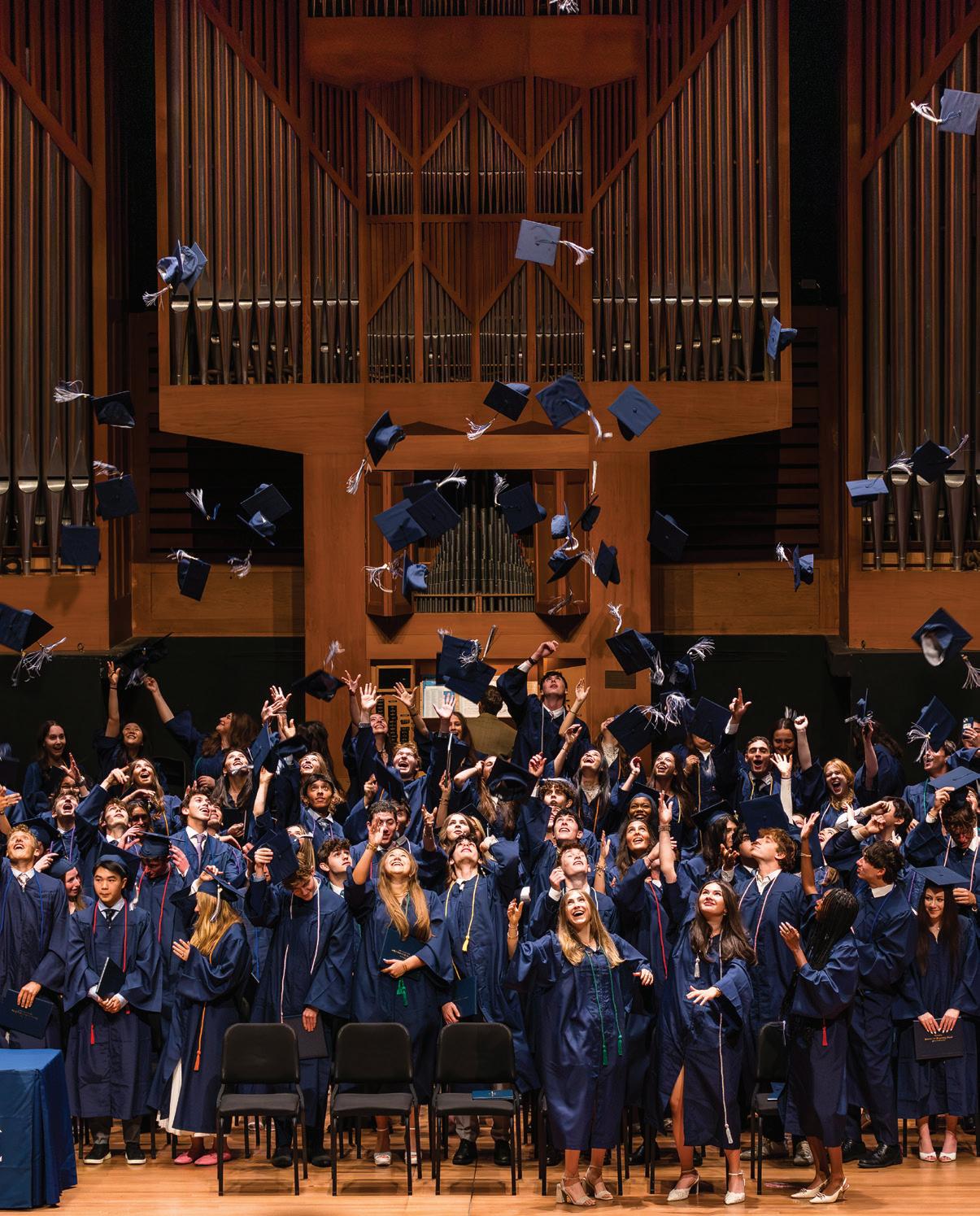

COLUMBIA GRAMMAR & PREPARATORY SCHOOL THE
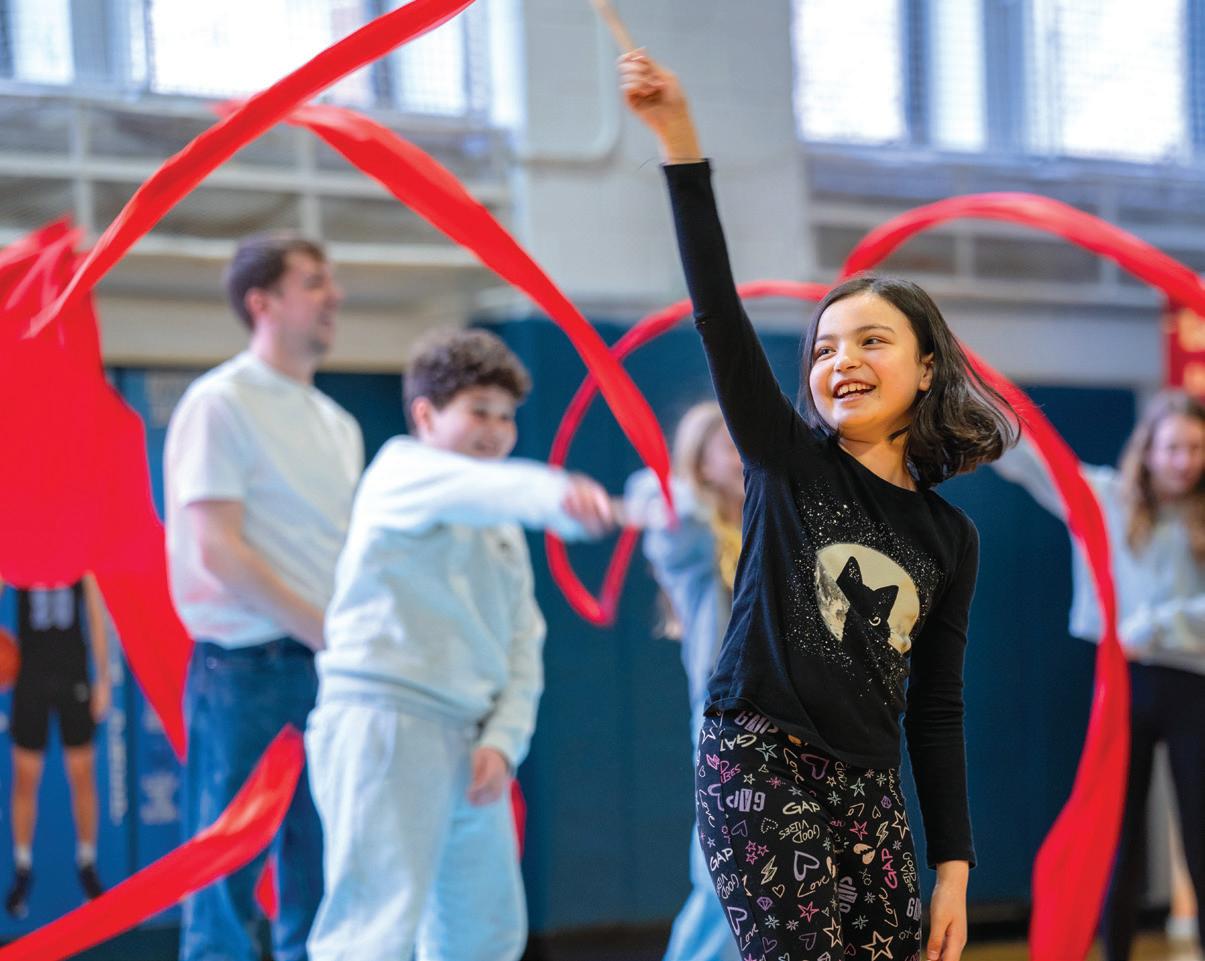
1764, THE MAGAZINE OF COLUMBIA GRAMMAR & PREPARATORY SCHOOL
SUMMER 2025
EDITOR
Marquis Austin
CONTRIBUTORS
Marquis Austin
Gretchen Phelps-Nelson
Steffany Poveda-Solorio
Ruth Samuelson
Marvin Terban
ART DIRECTION
Kristen Winstead, www.sundstudio.com
PHOTOGRAPHY
Marquis Austin
Marjorie Becker
John Eng
Da Ping Luo
Steffany Poveda-Solorio or courtesy of subject
ILLUSTRATION
Chris Gash
PRINTING
Lane Press
BOARD OF TRUSTEES
2024–2025
HEAD OF SCHOOL
William N. Moseley
PRESIDENT
Marielle Safra
CHAIR
Meredith Verona
OFFICERS
Dana Landis Birnbaum ’97, Vice President
Leslee Cowen, Vice President
Joseph Tahl, Vice President
Benjamin Pass, Treasurer
Becky Banyasz, Secretary
CHAIR EMERITUS
Andrew Zaro
TRUSTEES
Alan Carver
Katie Conovitz
Daniel Damaghi
David Friedland
Stephen Hanson
Sanford Heller
Margaret Jones
Alexander Knaster
Tracy Maitland
Jonathan Moller
Sheeraz Qureshi
Meredith Sotoloff
Tom Tao
Jeffrey Weiner
Alexander Zaro
TRUSTEES EX OFFICIO
Alana Hackel
Susan Winthrop
Danielle Wollman
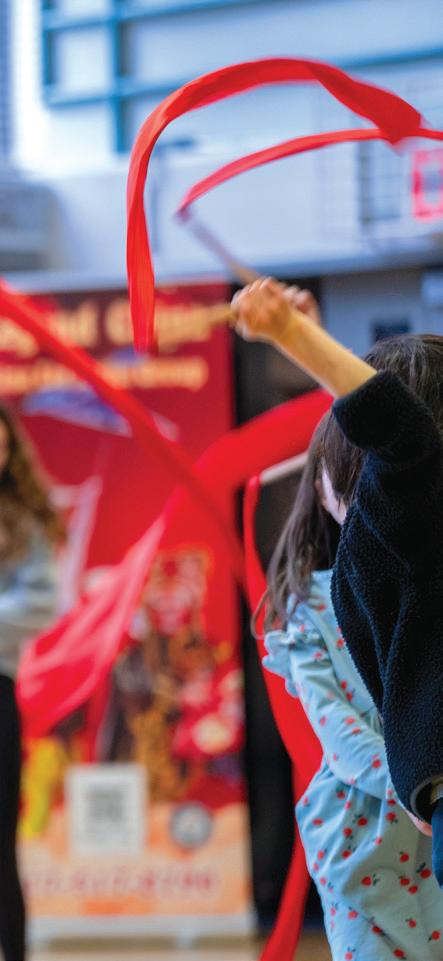
MISSION STATEMENT
CGPS nurtures each student’s unique passions and talents inside and outside the classroom, unifying and inspiring members of its community in a rigorous but relaxed learning environment, preparing them for the finest colleges and instilling in them the confidence, ethical values and sense of purpose to embrace challenges, to achieve their dreams and to improve the world.
Follow CGPS and Stay Connected @CGPSnyc 2
Above: During our cross-divisional World Language Week, students join in on the fun during a special Chinese acrobat performance featuring ribbon dancing, spinning plates and more.
On the cover: Members of the Class of 2025 toss their caps in the air at Alice Tully Hall as they become proud graduates of CGPS.
4 News from 93rd Street
Two Advanced Science Research seniors earn prestigious recognition for their research projects; the Middle School sparks creativity in sixth through eighth graders with the launch of their inaugural trimester Arts Rotation; second graders participate in a cross-curricular celebration of innovation at the Grammar School’s first Innovation Festival; Prep School students develop critical thinking skills as they explore a wide breadth of rigorous humanities offerings; former Princeton University Director of Admission Matthew Alander joins the School as our new Director of College Counseling and more.
26 Graduation 2025
30 Alumni News
Dr. Eric Pierce ’77, a world-renowned clinician-scientist and director of the Ocular Genomics Institute at Mass Eye and Ear and Harvard Medical School, pioneers groundbreaking gene therapies for inherited retinal diseases; Marlo Shankweiler ’17, guitarist for the rising band Melt, reflects on their journey from winning a high school “Battle of the Bands” to playing at the famed Bonnaroo Festival; graduates share memories and laughter with old friends and teachers during spirited alumni events.
“I
think of science as putting your small brick in a big wall, trying to build something you understand. I
wanted to do science that—if we made that effort and discovered something— could have an impact on human health.”
DR. ERIC PIERCE ’77, HARVARD OCULAR GENOMICS INSTITUTE DIRECTOR
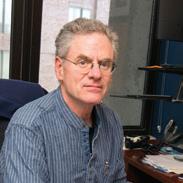
LETTER FROM the Head of School
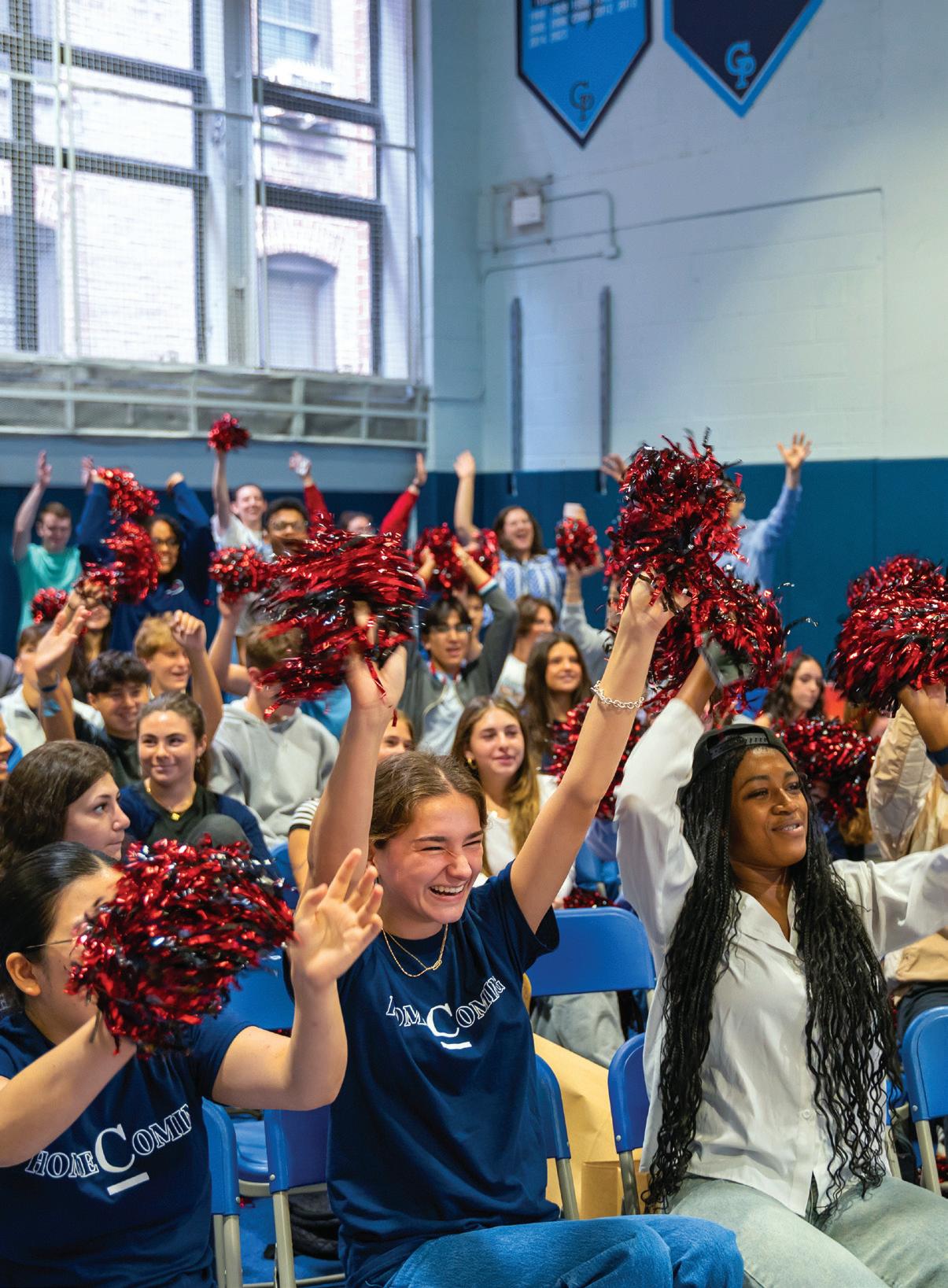
Dear CGPS Family,
I am excited to share the latest issue of our annual magazine, 1764. Over the past year, I have had the pleasure of getting to know so many of you as CGPS’s new Head of School. From greeting families each morning before school starts to joining classrooms where teachers engage curious students through hands-on learning, every interaction has reaffirmed my original instincts about CGPS. It is a special place where lifelong relationships are forged, indelible memories are made and teachers put purpose, balance and academic rigor into action through programs and extracurriculars that define the best student-centered program in New York City.
This edition of 1764 brings just a few of these moments to life, offering you a glimpse inside our School and some of the milestones and key experiences that students enjoy along their extraordinary CGPS journey. In this issue, you can read about our second graders participating in a cross-curricular celebration of innovation at the Grammar School’s first Innovation Festival; two of our Advanced Science Research seniors earning prestigious recognition in the Regeneron Science Talent Search and the International Science and Engineering Fair; our Middle Schoolers exploring their creativity as they compose original music, write short plays and study the foundational principles of drawing in our new trimester Arts Rotation; the wide breadth of humanities offerings in
the Prep School; our recent graduates’ impressive college list and much more.
There are also profiles highlighting the successes of some of our esteemed alumni—including Dr. Eric Pierce ’77, a world-renowned clinician-scientist and director of the Ocular Genomics Institute at Mass Eye and Ear and Harvard Medical School, and Marlo Shankweiler ’17, guitarist for the rising band Melt, which she formed while a student at CGPS. Additionally, you can learn about how we continue to grow our alumni program with a variety of community events and initiatives throughout the year.
Thank you to all of you for making my first year as Head of School so special. I am grateful to be part of a community where each child shines brightly as they develop a deep sense of purpose, joy and self-satisfaction. By the time our students are seniors, we know that all doors will be open to them because every day at CGPS offers an opportunity to explore their interests and pursue their passions to the fullest.
We are so proud of our students, parents, alumni, faculty and staff, who all work together to create this amazing community. Go Lions!
Sincerely,
WILLIAM N. MOSELEY HEAD OF SCHOOL
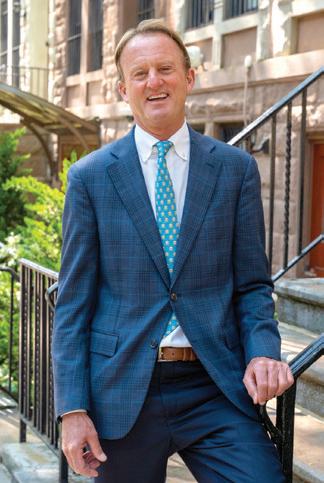
“CGPS is a special place where lifelong relationships are forged, indelible memories are made and teachers put purpose, balance and academic vigor into action through programs and extracurriculars that define the best student-centered program in New York City.”
NEWS FROM 93rd Street
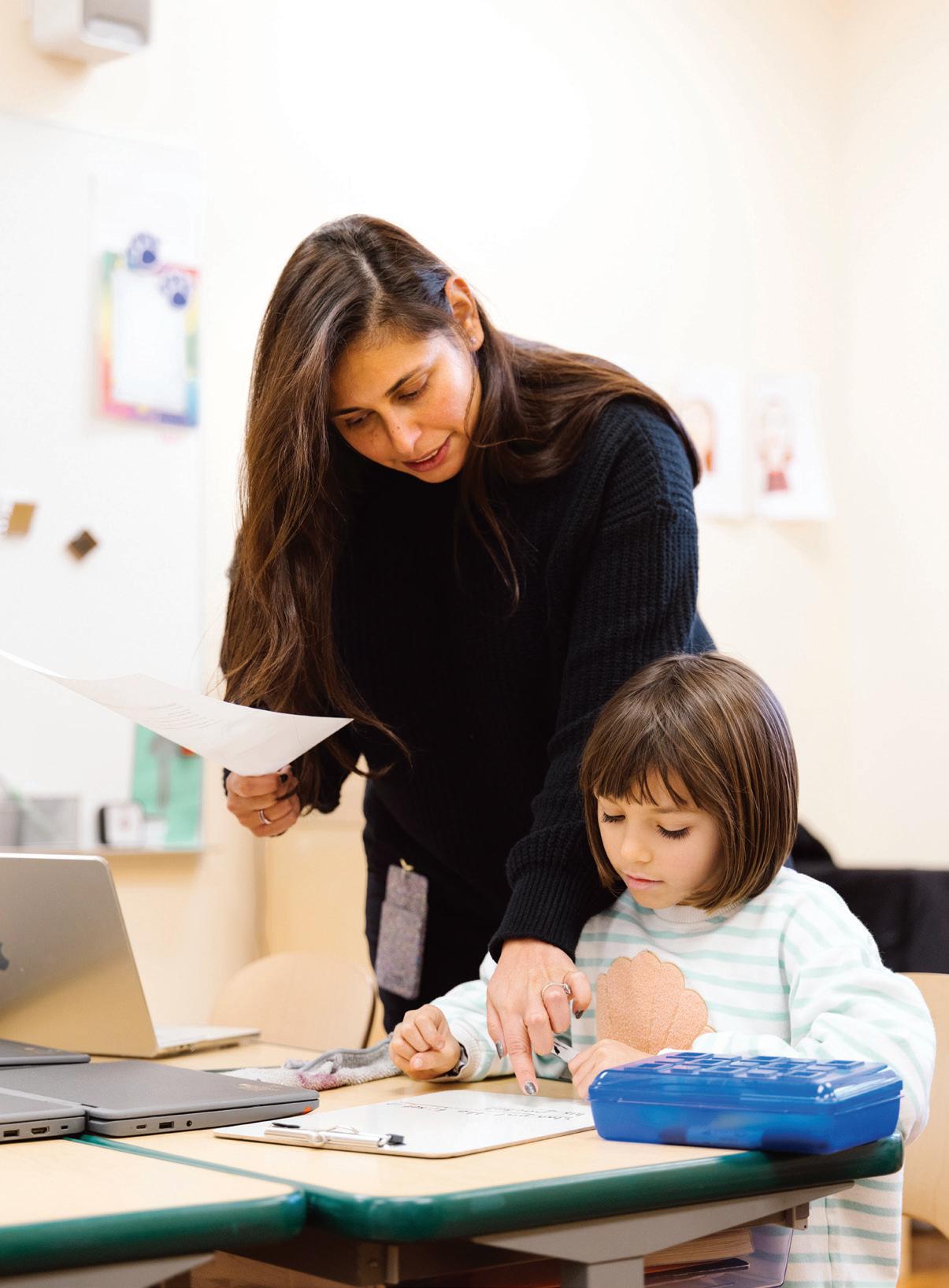
During a Grammar School literacy lesson, third grade teacher Smita Sehgal ’99 works with a student to mark up syllable types in words, suffixes and vowel sounds.
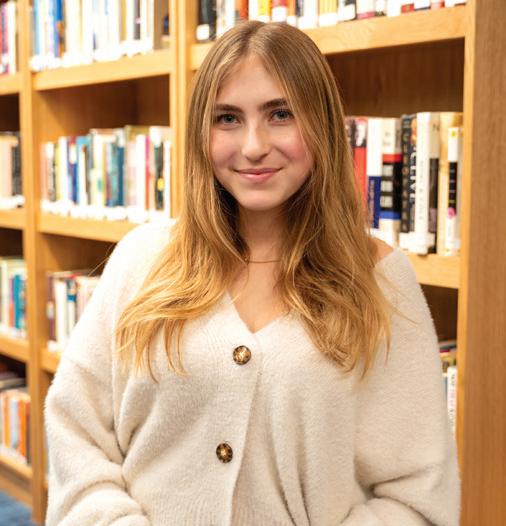
Scientific Scholars
Regeneron and the Society for Science honor seniors Sophie Eisenberg and Daniel Amoils for their exceptional research in neuroscience and astrophysics
This year, two seniors in our Advanced Science Research (ASR) program—Sophie Eisenberg and Daniel Amoils— earned prestigious recognition for their research projects. Sophie and Daniel distinguished themselves through the Regeneron Science Talent Search (STS) and the Regeneron International Science and Engineering Fair (ISEF), respectively.
In January, Sophie was named a Regeneron STS Scholar. The STS is the nation’s oldest and most prestigious science and mathematics research competition for high school seniors. Nearly 2,500 students from across the United States submitted their research projects this year, and Sophie was recognized as one of the top 300 high school scientists in the country.
Sophie’s research focused on brain-computer interfaces—devices that allow the human brain to communicate with and control external software or hardware, such as a computer or robotic limb. She taught herself Python, a coding language widely used in machine learning, and developed algorithms capable of distinguishing between thought commands like “left” versus “right” and “up” versus “down.”
In May, Daniel represented New York City at the ISEF, the world’s largest science competition for high school students. Nearly 1,700 students from over 60 countries, regions and territories were selected to attend the event in Columbus, Ohio. Daniel’s project was one of only 13
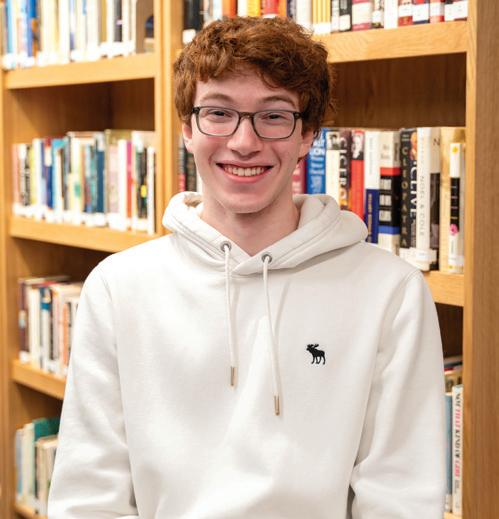
from all of NYC to advance to the international stage. This achievement marks the fifth consecutive year that CGPS has had an ISEF finalist, underscoring the strength of our ASR program.
Daniel’s research investigated how X-ray light reflecting off the accretion disk of a black hole can help reveal the structure of the corona—a region near the black hole that emits powerful radiation but remains poorly understood. “Black holes are invisible, but by studying the light from their surroundings, we can learn a lot about how gravity works at the extremes,” Daniel explains.
Using a cutting-edge model called kynstokes, he tested how reflected light affects polarization patterns. His findings supported earlier studies indicating the corona is stretched horizontally, further suggesting a connection between the corona and the black hole’s powerful jet. These insights could help refine models of black holes and test the limits of current theories of gravity.
One of Daniel’s ISEF judges was a colleague of the scientist who helped develop the telescope that captured the data used in his project—a thrilling connection for the high school researcher. “Getting the chance to present to judges who were truly knowledgeable about my subject was a great experience,” he says.
Looking ahead, Sophie and Daniel are eager to apply what they have learned through ASR—ranging from conducting high-quality scientific research to writing formal papers, delivering presentations and thinking quickly on their feet—at the University of Pennsylvania and Princeton University, respectively. “Thinking back on my experience at CGPS, ASR is the best class I’ve taken in terms of what I’ve learned and what I’ve gotten out of it,” says Sophie.
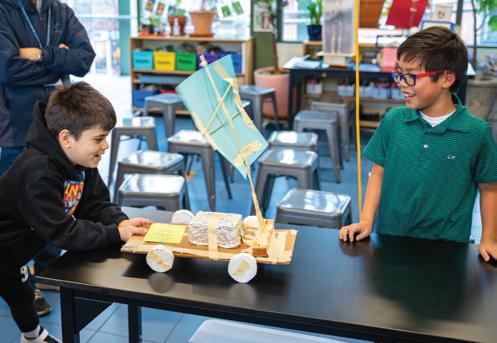
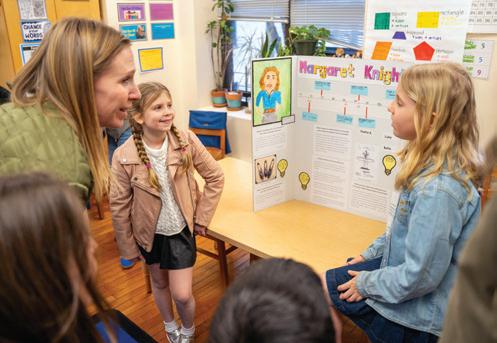
A Celebration of Innovation
Students participate in a cross-curricular celebration of innovation at the Grammar School’s inaugural Second Grade Innovation Festival.
By Marquis Austin
How can we innovate to improve the world? That was the driving question behind the Grammar School’s inaugural Second Grade Innovation Festival, hosted this past March. As part of the division’s new inquiry-based social studies curriculum—each unit of which begins with an overarching question that inspires a deeper understanding of the world—students explored this idea through thoughtful discussion and engaging hands-on activities.
“Since we had a new curricular focus, we needed to rethink our big second grade festival,” say Grade Two Coordinators Laura Codron and Cara McPhillips. “We partnered with music, science and art and combined writing and social studies in the classroom to create each component of the Innovation Festival.”
In social studies, pairs of students researched innovators throughout history, such as America’s first female self-made millionaire, Madam C.J. Walker, and Mary Anderson, the inventor of the windshield wiper. Each pair read and annotated books and articles about their subject, then created a poster presentation featuring paragraphs detailing the innovator’s impact on society, a timeline highlighting life milestones and a hand-drawn portrait of the historical figure.
Meanwhile, in science, second graders studied wind energy and were challenged to identify a problem they
could solve by constructing a prototype capable of harnessing the wind. Working together, students followed the engineering design process—ask, imagine, plan, create and improve—as they built, tested and refined their innovative problem-solving creations. “The students were deeply engaged from start to finish, excitedly testing and improving their designs,” share science teachers Deon Edmond, Beth Markowitz and Claire Rose. “It was incredible to see their perseverance and creativity at work. We hope this experience inspires them to continue thinking like innovators and problem-solvers in everything they do.”
During the music portion of the festival, students performed innovation-themed songs written and composed by music teacher Tobias Gebb. He led the second graders as they sang catchy tunes about engineer and cartoonist Rube Goldberg, science fiction pioneer Mary Shelley, mathematician Katherine Johnson and William Kamkwamba, who, like the students, harnessed the wind to solve an engineering problem. “The concert was an absolute blast! I was so impressed with the students and how well they did,” says Mr. Gebb. “They sang, played instruments, improvised, acted, performed with bucket drums, played body percussion and even performed a human Rube Goldberg machine during the song!” After the show, parents walked the halls to view the futuristic paintings and 3D sculptures their children created in art class.
The new event—truly a cross-curricular exploration and celebration of innovation—was a hit among second grade families and “is bound to become a CGPS tradition,” says Social Studies Curriculum and Department Head Brooke Waldman. “The students were deeply committed to all aspects of Innovation Day. It was clear from the smiles on their faces that they were beaming with pride for all their hard work and effort!”
Freedom’s Gambit
International Master Nico Chasin ’25 uses chess as a means of giving back to communities near and far
By Steffany Poveda-Solorio
For International Master Nico Chasin ’25, chess is more than just a game—it’s his lifeblood. This past year, Nico, ranked among the top 100 chess players nationwide, helped lead the Prep School chess team to its first-ever National High School Championship at SuperNationals VIII, making CGPS the top high school team in the country. He also earned individual championship recognition and received the Scholar-Chessplayer Award, which honors outstanding juniors and seniors who promote a positive image of chess while excelling in academics and leadership. For Nico, though, chess goes beyond winning titles—it’s a means of giving back to others.
This drive to give back began early in Nico’s chess journey, which started not in a classroom or at a chess club, but in Union Square while waiting for his parents to finish their weekend shopping at the Greenmarket. It was there that he met his mentor, Big John. “I got to learn a lot about him, including that he was formerly incarcerated and that’s where he learned to play.” Big John played a pivotal role in helping Nico hone his skills, and as a result, Nico quickly rose through the ranks, clinching new titles early in his career.
As he advanced, Nico soon realized that chess had the power to help others. This led him to launch Freedom’s Gambit, a partnership with his friend Jack Levine and Children of Promise, NYC—an organization that supports children affected by parental incarceration through education, mentoring and emotional care. Together, they share their passion and knowledge of chess with students whose families have been affected by mass incarceration, striving to make a meaningful difference in their lives. “I’m connecting with an issue that’s important to me,” says Nico. “Getting to mentor these kids and teach them something I love is really rewarding.”
Nico’s outreach, however, isn’t limited to New York City. For the past three years, he has been teaching a weekly virtual chess class for students in Nairobi, Kenya. “I was actually in Montenegro at the World Junior Chess Championship and bumped into one of my students there,” he recalls. “This class means a lot to me—these kids have been playing for a while, and they’re tournament players who are already hooked.” His Zoom meetings now attract around 30 students each week, and that number continues to grow.

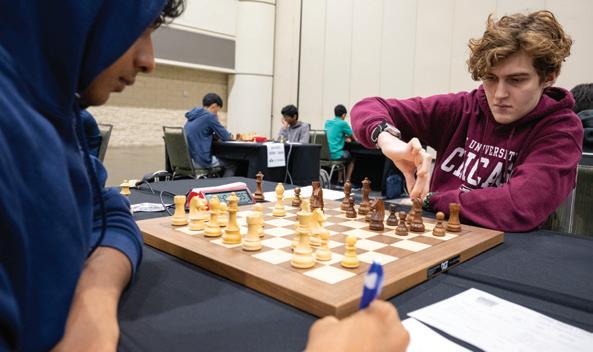
Looking ahead, Nico plans to take a gap year before heading to the University of Chicago. He will compete in chess tournaments around the world—from Aix-en-Provence, France, to Riga, Latvia—as well as in the U.S. Junior Championship, an invitation-only tournament for the top 10 U20 players in the country.
Nico is appreciative of his time at CGPS and is excited to see his younger chess teammates, under the guidance of Director of Chess Sophia Rohde, continue the School’s success. “It’s nice to know that the CGPS chess influence will continue after I graduate,” Nico says. “I’m grateful for everything that Ms. Rohde does to support chess players here. It simply wouldn’t be possible to compete at the level I do as a student without that support. CGPS really understands and cares about balancing school with other passions.”
A New Day in the Middle School
In her first year as Middle School Director, Michelle Schackman has led the division in launching new initiatives focused on student unity, technology, the arts and more
By Ruth Samuelson
“It has been a great year. It’s busy, energetic and nonstop,” says new Middle School Director Michelle Schackman. Since taking the helm last fall, Ms. Schackman has made her mark, launching new initiatives, adjusting the schedule to create a more robust arts curriculum and reimagining programs focused on student transitions into and out of the division.
Ms. Schackman, who is on the cusp of her 20th year at CGPS, led the Middle School through a historic change this year: The division grew up—literally. It now includes grades 6–8, as opposed to grades 5–7. The benefits have been manifold. Eighth graders now “have the opportunity to be leaders for a longer period.” They also enjoy a more playful academic environment where college preparation isn’t the main focus. For their parents, the change has been a “relief,” says Ms. Schackman. The mentality is: “Let’s not put the cart before the horse—let’s focus on the Middle School years.” Next year, the division will introduce a new capstone experience for eighth graders as part of their new two-year civics curriculum: The grade will visit Washington, D.C., for a jam-packed three days of hands-on learning. This curriculum builds on the research skills developed in the sixth grade Current Issues Research Seminar and guides students in exploring the purpose of government and the role they, as young citizens, can play.
Ms. Schackman is embracing that “being in the middle” means “tending to transitions on both sides.” For rising sixth graders, this transition begins the year before. Starting in January, fifth graders spend time in Middle School spaces and learn about new academic expectations and programming. Teachers and administrators also meet with their Grammar School counterparts to assess students’ preparedness. Parents are involved too, attending tours, meetings and “Family Learning Sessions” on topics like executive functioning and critical thinking skills to ensure they understand what’s coming.
In the fall, the Middle School offers the Lion Link program, which pairs incoming students with current
ones based on shared interests or hobbies. Within the division, sixth, seventh and eighth graders come together for the Unity Cup. Modeled after the Prep School’s House System, this new community-based initiative invites multi-grade groups to engage in friendly competitions that promote school spirit, community, connection and service. “Within their teams, younger students look up to older students, who demonstrate leadership,” says Ms. Schackman.
As for the eighth graders, she understands their needs particularly well. In the past, she served as an eighth grade dean and English teacher, as well as a Prep School dean. “I know the classes students will have in the future. I know the dynamics among students. I know the teachers. It all helps me focus.”
To immerse herself in the Middle School, Ms. Schackman met individually with every teacher in the division last year. Those conversations led to several key takeaways and fresh ideas. This year, for the first time, students are taking art courses—theater, visual arts and music—in trimesters as part of the Middle School’s new Arts Rotation. Now, teachers meet with their classes more frequently, which provides greater momentum and continuity. They are also using trimesters to build toward meaningful culminating projects.
This year, the division also introduced a brand-new technology curriculum developed by the nonprofit Project Lead the Way. In the future, all sixth graders will take Design and Modeling; seventh graders will take Computer Science for Innovators and Makers; and eighth graders will take Automation and Robotics. Each skill set deliber ately builds to and complements the next.
As she winds down her first year, Ms. Schackman is mulling other tweaks and new programming. She’s eager for a rest but has loved the new role. “It feels great,” she says. She loves “the innocence and curiosity and open ness of this age group—the sheer joy and fun that they’re willing to have.”

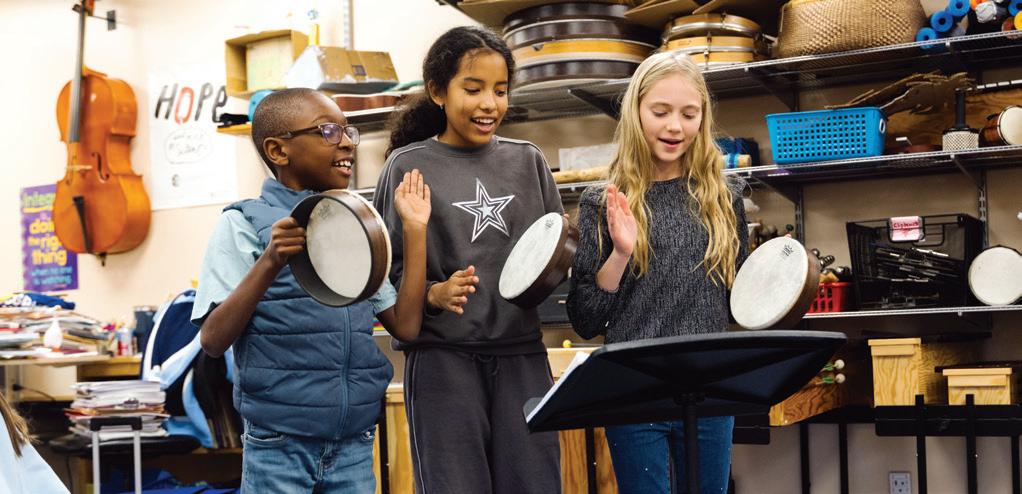
Igniting Creativity
Over the course of the year, Middle School students rotate through robust theater, music and studio art classes as part of the division’s new trimester Arts Rotation

By Steffany Poveda-Solorio
In September, the Middle School ignited the creativity of CGPS’s sixth through eighth graders with the launch of its inaugural trimester Arts Rotation. This exciting new program provides students with the opportunity to discover and pursue creative interests by rotating through hands-on theater, music and studio art classes, each meeting four to five times per eight-day cycle. For example, from September to December, a student might have music, followed by theater from December to March, and then studio art from March to June. “What’s incredible about the Arts Rotation is that it gives students a comprehensive experience in each of these disciplines,” says music teacher Jay Hassler. “We see the students so many more times in a week, and retention is a lot higher. It allows for a much richer experience.”
Whether writing original music, performing on stage or creating relief sculptures inspired by the work of contemporary artist Frank Stella, students cultivate a stronger appreciation for the arts. They also build self-confidence and develop key interpersonal and collaboration skills as they work together to create art. To culminate each
rotation, students collaborate on projects that delve deeper into each medium.
For instance, sixth and eighth grade students in the theater rotation adapted classic folktales and fables, such as “The Boy Who Cried Wolf” and “The Town Mouse & the Country Mouse,” into short plays, which they performed on stage in our Underground Theater. Seniors from the Prep School’s Advanced Production Workshop even stopped by to show their support and offer constructive feedback.
Meanwhile, seventh grade music students—applying their newfound knowledge of rhythm, harmony and melody—composed soundtracks for original short stories they wrote. “The biggest value that students gain from this program is the ability to think creatively and infuse their creativity into all the work they’re doing,” shares music teacher Rebecca Perlman. “Students are more engaged than they were in the past—that is a product of consistency. Seeing them more frequently has allowed us to build significant, forward-moving momentum.”
The skills students develop during their time in the Arts Rotation benefit them in the studio, on the stage and beyond, helping them thrive in a myriad of subject areas. Whether making use of music production software in technology class or drawing on acting techniques when presenting a project in front of their peers, “student learning has increased because of this model,” says Middle School Director Michelle Schackman. “It has brought consistency to the student experience, a broader introduction to various disciplines and allowed for gratifying culminating projects.”

Shaping Critical Thinkers
From the moment they enter the Prep School in ninth grade through senior year, students explore a wide breadth of rigorous humanities offerings
By Marquis Austin
“Learning to think critically and wrestle with topics in the humanities is just as important as courses in STEM when it comes to preparing students for college and beyond,” says Prep School Director Dr. Scott Wilson. Upon entering the division in ninth grade, students dive into a range of humanities courses, including grade-level English and U.S. History, along with studio art, music and theater classes as part of the ninth grade rotation. “Ninth graders can also choose to take a semester-long elective,” says Dr. Wilson, with options covering areas like creative writing and theater design.
In addition, starting in ninth grade, students can join Independent Readers Select, which functions as a personal seminar with a faculty member. Together, either one-onone or in a small group, they read books throughout the semester, meeting once every eight-day cycle to discuss
the material. Book selections span genres from fiction to history and memoir, offering something for every student. Those interested can move on to Advanced Literary Studies, which involves meeting more frequently, tackling more complex readings and presenting a final project to teachers at the end of the semester. “One thing we want students to gain is how to pursue something they’re passionate about,” says English Department Head Glenn Cramer. “That’s a main goal of what they’re doing in the humanities. What fascinates you, and how do you want to explore that? It’s a huge part of their education.”
Beyond grade-level English, Modern Global History and various electives, tenth graders can now apply for the new Sophomore Seminar in the Humanities. This interdisciplinary class, co-taught by teachers from different departments, focuses on a central theme and investigates how subjects in the humanities intersect. This year’s inaugural class, led by English teacher Emily Caris and history teacher Lex Liesman, focused on the theme “Resistance: Everyday People, Everyday Lives.” Through poetry and historical writings, students examined acts of resistance, from the White Rose in Nazi Germany and La Résistance in occupied France to Lech Wałęsa’s leadership of Solidarność during the Cold War.
During the second semester, students worked on self-directed projects related to resistance, which they shared with teachers, family and friends at the first-ever
“Learning to think critically and wrestle with topics in the humanities is just as important as courses in STEM when it comes to preparing students for college and beyond.”
DR. SCOTT WILSON, PREP SCHOOL DIRECTOR
Sophomore Seminar in the Humanities Showcase in May. Encouraged to pursue any direction that excited them, they created projects in a variety of forms—including music performances, documentaries, podcasts, web design and studio art. “What we do in the second semester is the best way for students to cultivate deep investment in the material,” says Ms. Caris, emphasizing the importance of granting students ownership of their learning.
As students reach their junior and senior years, they encounter a broader array of humanities offerings, each designed to nurture their intellectual curiosity. Examples include Walt Whitman & His Influence, Literature of the Gilded Age of New York and History of the Nineties. There is also a wide selection of AP humanities courses, including AP English Literature and AP World History. During their final year in the Prep School, students can take the Advanced Senior Seminar in History, where they analyze a specific historical topic through the lens of international relations.
Prep Schoolers can deepen their engagement with the humanities outside of class through clubs like Model UN, Dance Ensemble and Columbia Blue, the School’s newspaper. Another signature offering is the Alex Bhak Experiential Learning Fellowship in the Arts and Humanities, which funds tenth through twelfth graders interested in pursuing real-world experiential learning projects inspired by their coursework.
“I’m proud that we’ve really expanded our offerings in recent years, ensuring that students passionate about the humanities can cultivate that interest early on in ninth and tenth grades and continue to develop it in eleventh and twelfth,” says Dr. Wilson.
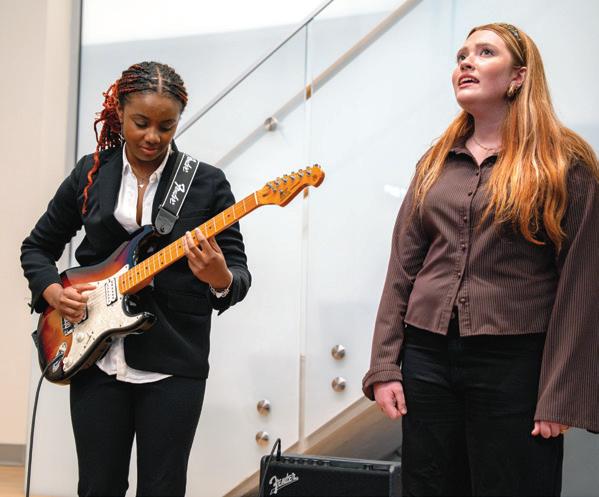

Top: Anaiah W. ’27 (left), accompanied by Kane B. ’27, performs during a presentation of her Sophomore Seminar in the Humanities project, Boxes, an exploration of jazz and its relationship to African American culture and resistance.
Bottom: Caroline Zaikowski ’25 presents her project at the fourth annual Alex Bhak Experiential Learning Symposium in the Arts and Humanities. Her project, Neon: Electrifying Art, Architecture and Advertising, took her to Las Vegas, where she interviewed people at the Neon Museum about the history of neon signs.
CGPS Snapshots
The 2024–2025 school year was full of many exciting and memorable moments that kept us smiling. Here are some of our favorites.
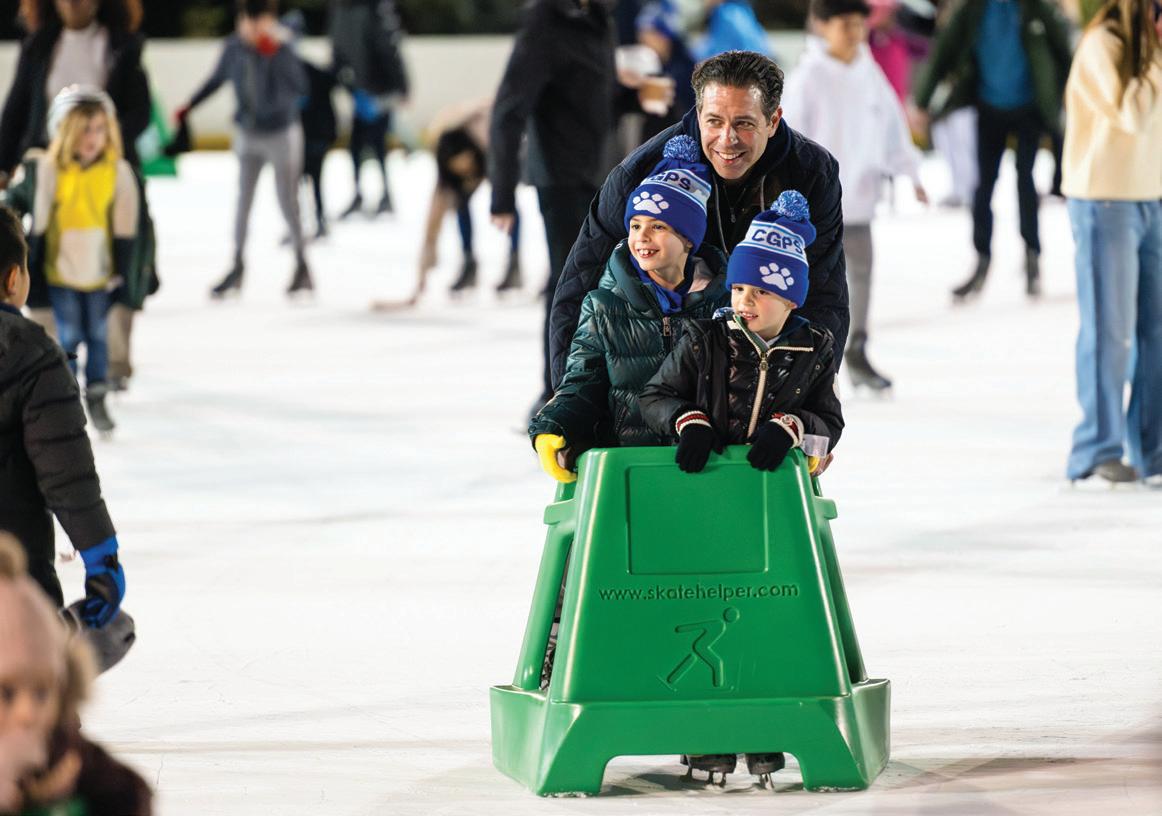
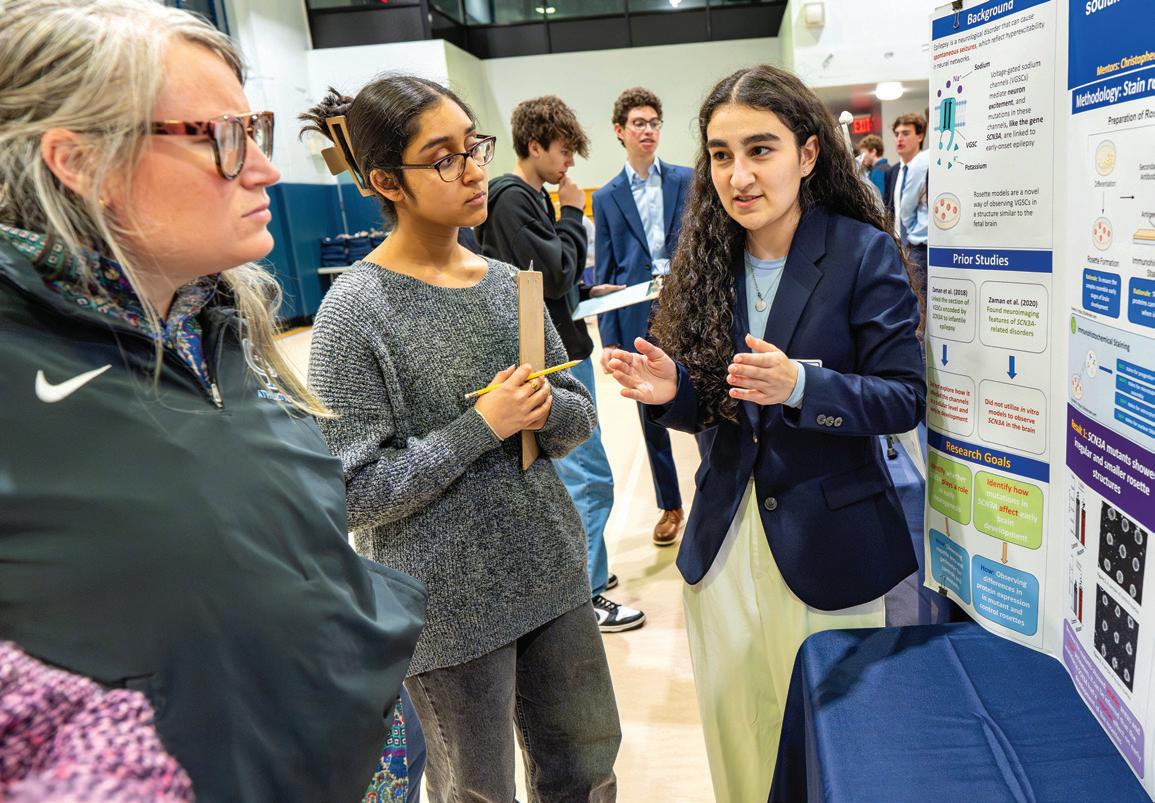
A student delivers a poster presentation on her research project at our sixth annual Advanced Science Research Symposium.
As they say goodbye to the halls of CGPS, a student from the Class of 2025 embraces one of their teachers during our Senior Walkout.
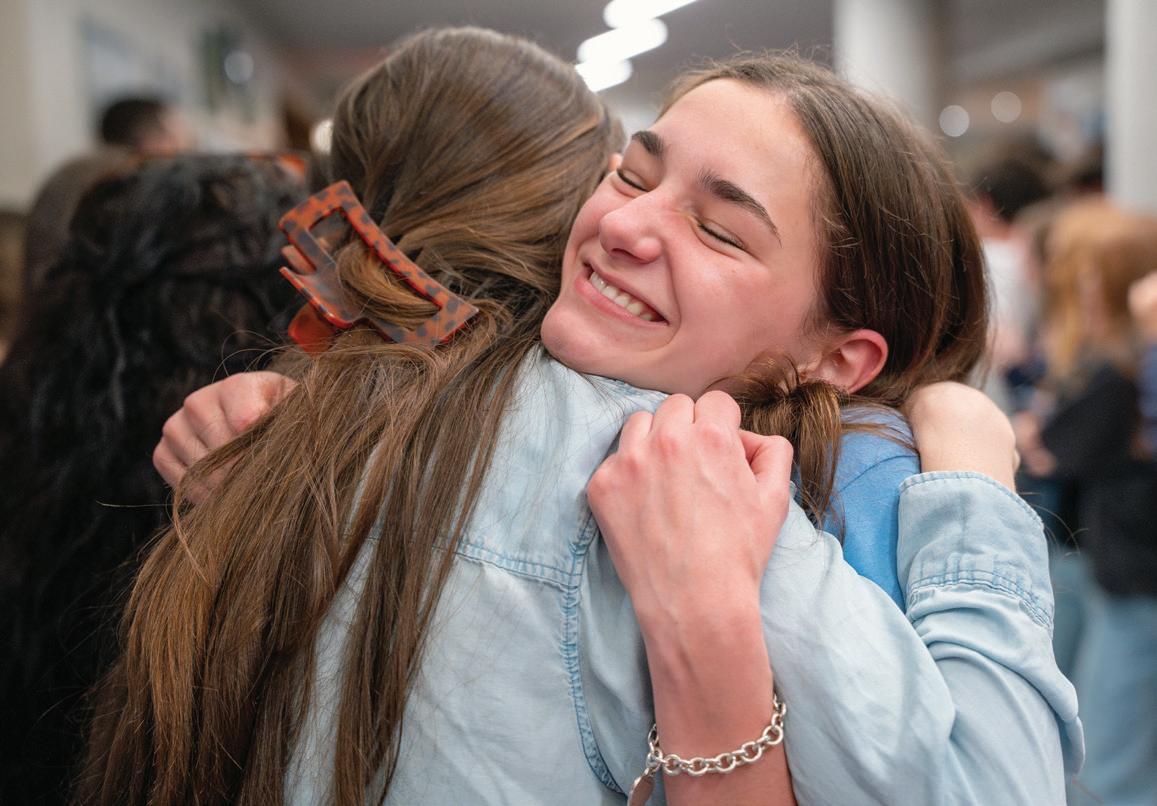
Seventh grade students bring Ancient Thebes to life on stage for their peers and teachers as they present an abridged version of Sophocles’ Antigone
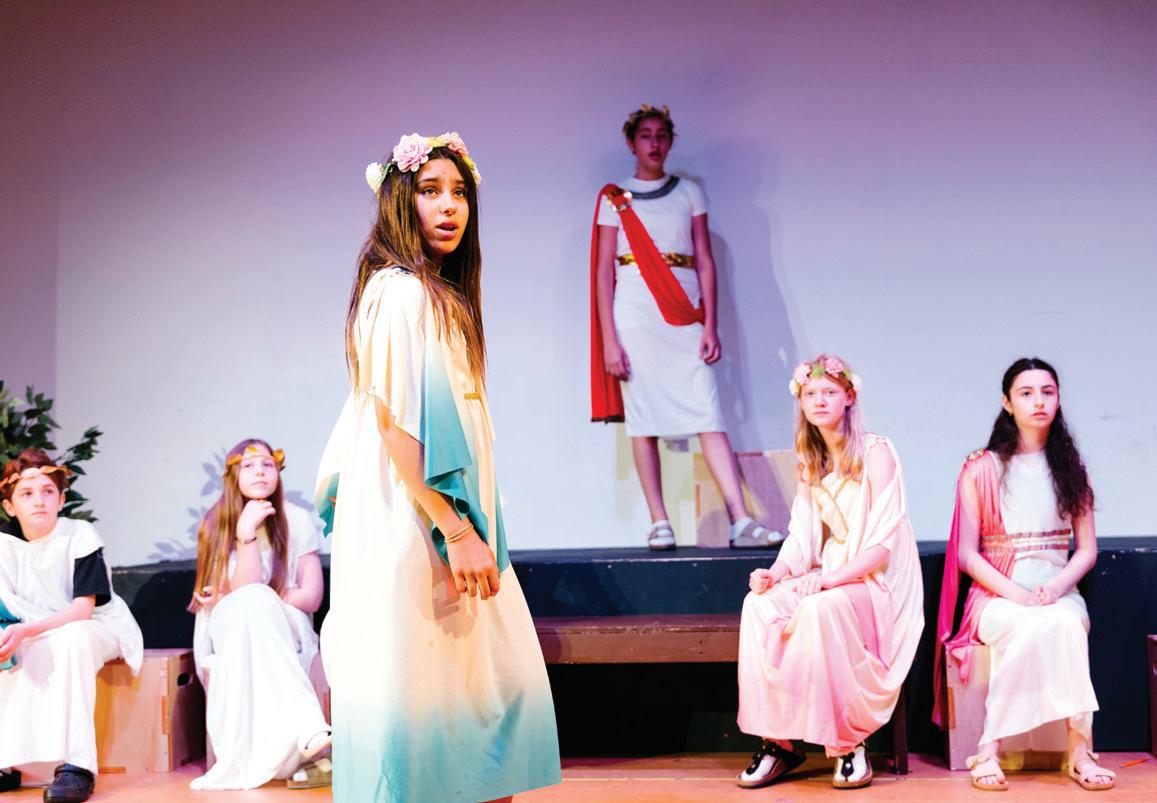
None other than Leo the Lion makes a grand appearance on the first day of school to welcome students back to campus!


Ninth graders bond with each other and their Peer Leaders during the Prep School’s annual overnight retreat to Camp Mason.
It’s spooky season! Students put on their best costumes and get into the Halloween spirit.
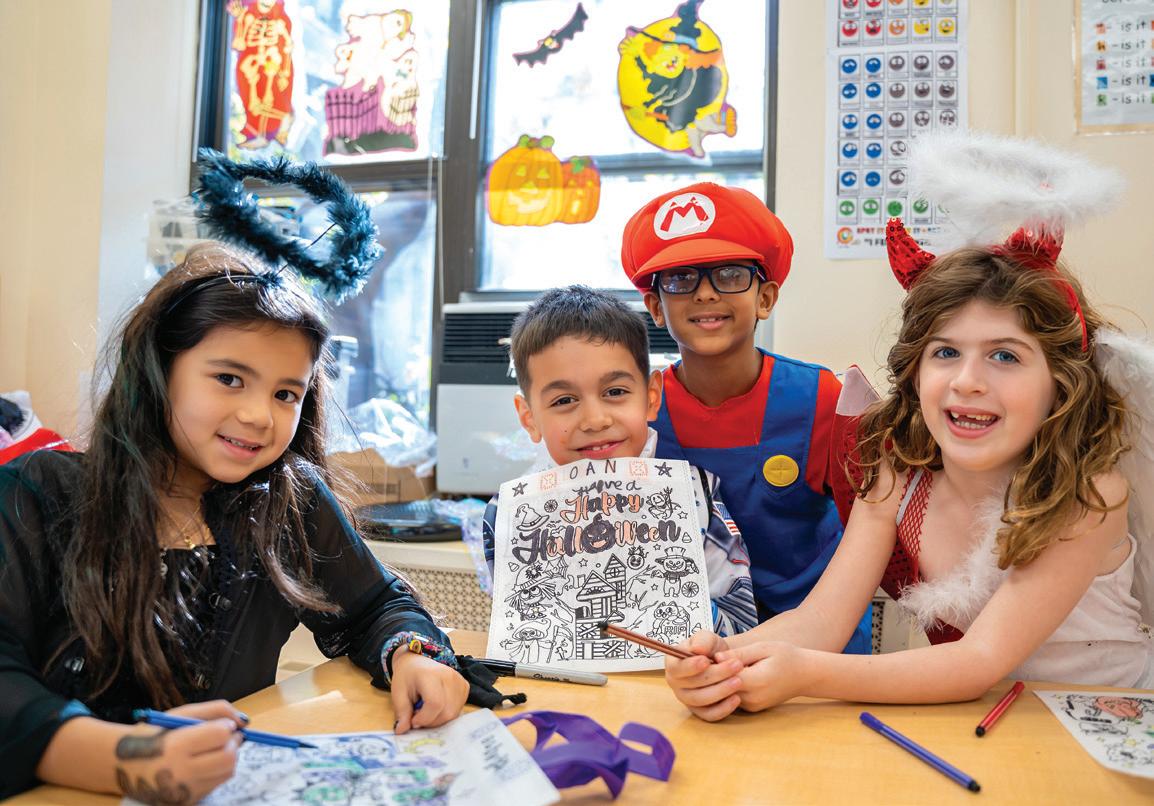
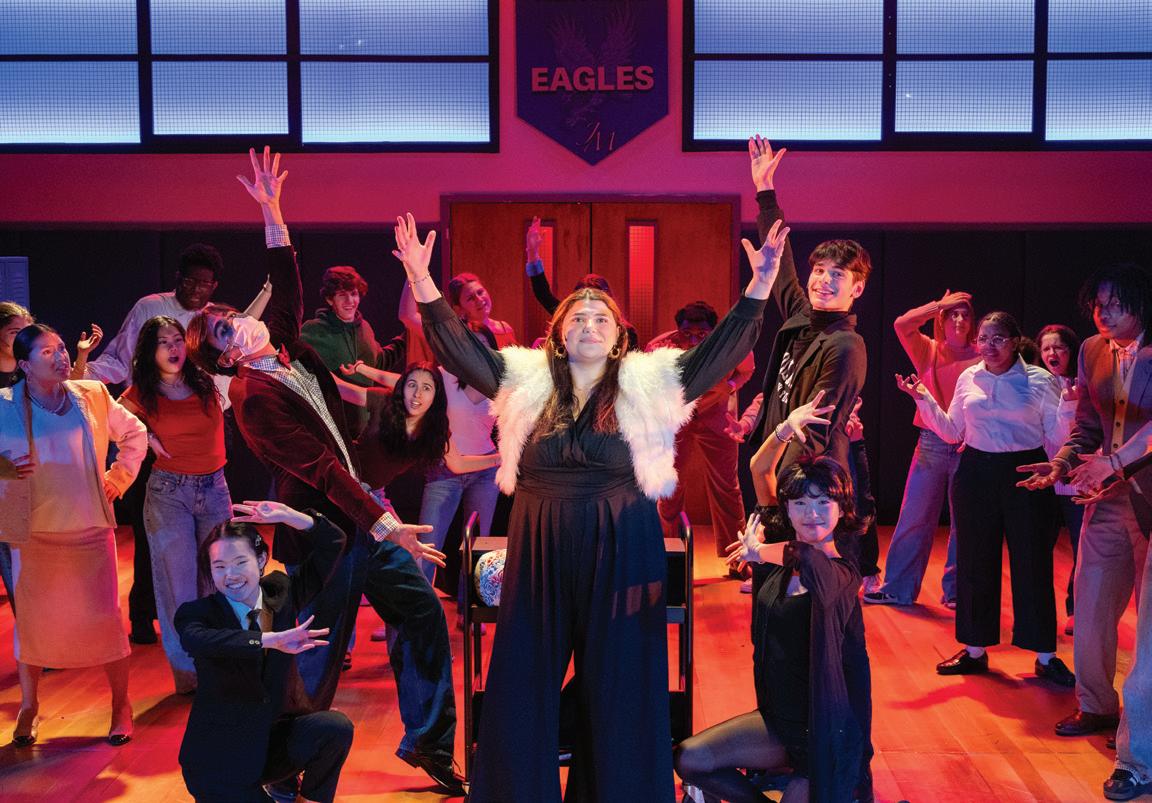
CGPS Soars into the Future
While CGPS is a storied institution with a history spanning more than 260 years, we remain committed to innovation, continuously evolving to meet the changing needs of our students.
Our new Tech Hub—a larger, more efficiently designed robotics lab—provides ample space for new equipment, such as 3D printers, laser cutters and power tools, and makes it easier for student engineers to design, build and create through hands-on experimentation. The upper-level VEX Robotics Competition Field serves as the ideal testing ground for students’ creations.
Meanwhile, our library has been transformed into a dynamic work environment, complete with breakout areas and a conference room to inspire student collaboration. Flexible furniture and seating allow the room to be reconfigured for various learning styles, projects and activities, giving students autonomy to “co-create” the space.
Above the library, renovated music rooms—including a state-of-the-art recording studio and a practice room where students can rehearse during the day—are now soundproof, allowing multiple ensembles to perform without being distracted by outside noise.
Upcoming projects feature the renovation of the Prep School gym to add more seating, new locker rooms, a larger weight room, fresh scoreboards and more, as well as the construction of a new Grammar School dining room and professional kitchen. A multifunctional space designed to serve as a true community hub, this new, welcoming facility will allow students to enjoy healthy and delicious meals and support a range of community-building activities.
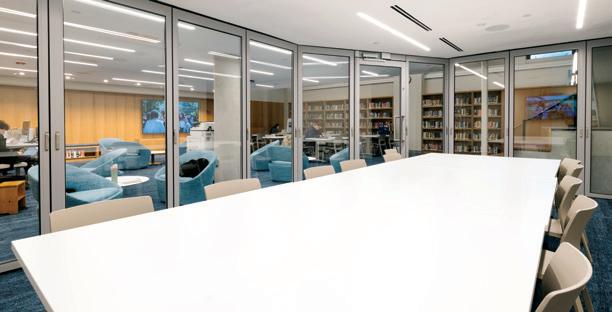
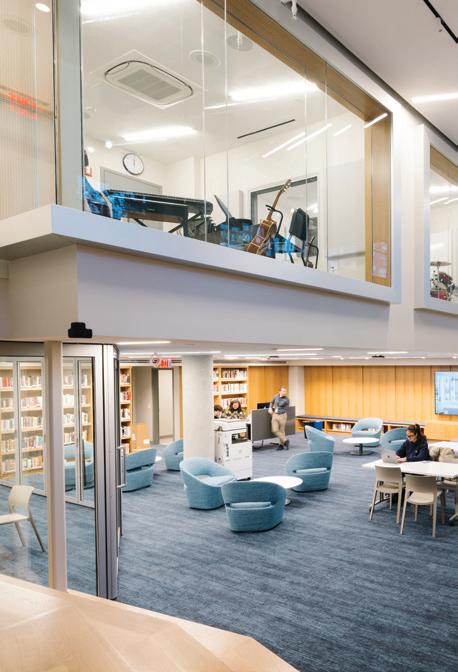

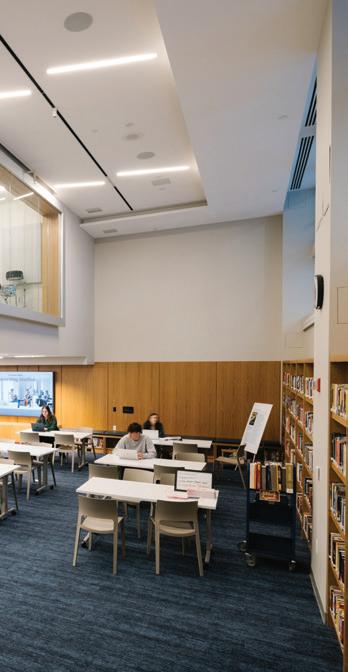
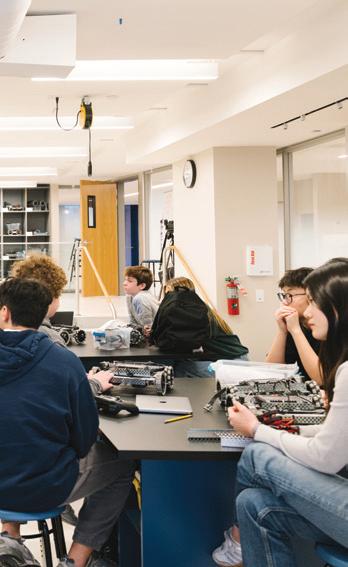


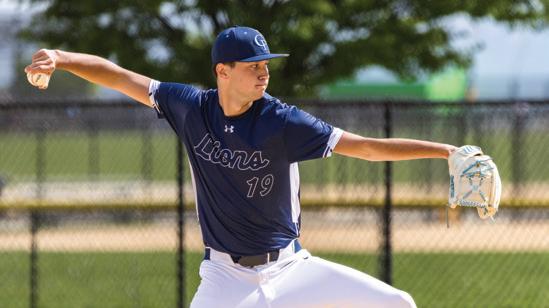
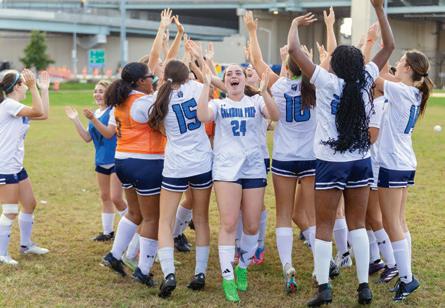
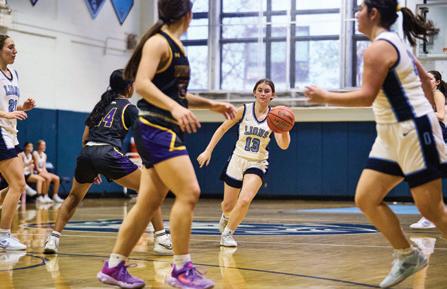
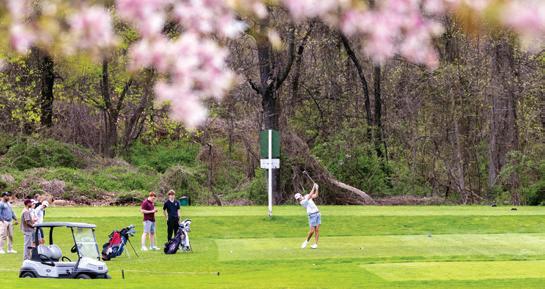
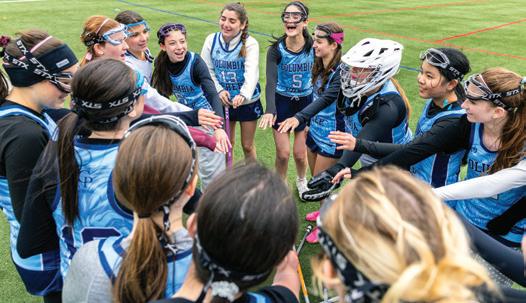

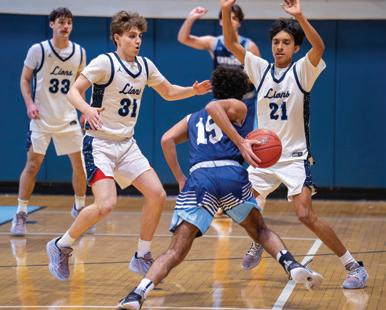

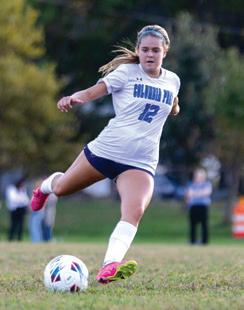

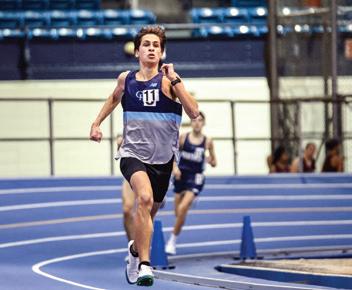
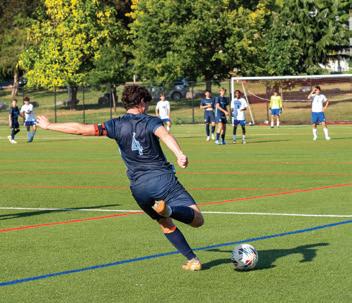
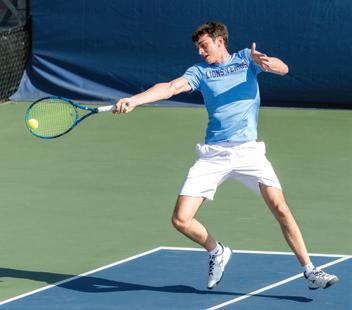
2024–2025
Sports Highlights
This year, our talented student-athletes continued to shine, exemplifying the commitment, integrity and sportsmanship that define our athletic program. Through teamwork, resilience and skill, our teams secured multiple NYCAL regular season and postseason championship titles, making the 2024–2025 school year truly one to remember. We also celebrated numerous individual honors: 17 All-League athletes and one NYCAL MVP in the fall, 12 All-League athletes in the winter, and 13 All-League athletes and one NYCAL MVP in the spring. Additionally, two Prep School students qualified for the New York State Track and Golf Federation Tournaments based on their outstanding performances.
“Our teams had a phenomenal run this year, filled with memorable moments and impressive performances,” says Director of Athletics Joe Grande. “Our athletes’ commitment, sportsmanship and teamwork truly reflect what it means to be a CGPS Lion.”
Join us in celebrating our 2024–2025 champions:
• Girls Varsity Soccer, Regular Season & Postseason Champions
• Girls Varsity Tennis, Regular Season & Postseason Champions
• Girls Varsity Volleyball, Regular Season & Postseason Champions
• Boys Varsity Cross Country, Regular Season Champions
• Girls Varsity Cross Country, Postseason Champions
• Boys Varsity Soccer, Postseason Champions
• Boys Varsity Basketball, Regular Season & Postseason Champions
• Boys JV West Basketball, Regular Season & Postseason Champions
• Boys Varsity Baseball, Regular Season & Postseason Champions
• Boys Varsity Tennis, Regular Season & Postseason Champions
• Boys Varsity Golf, Regular Season & Postseason Champions


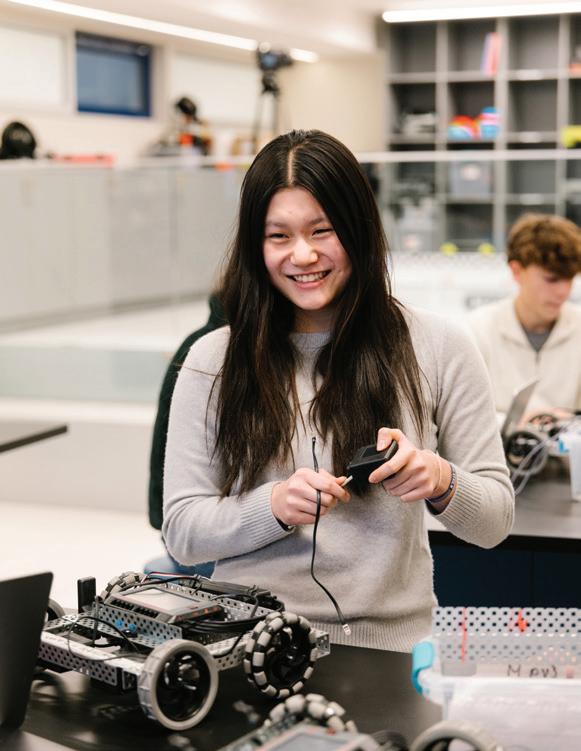
Innovation Station
CGPS’s technology program equips students with the skills and knowledge they need to thrive in today’s rapidly evolving digital world
By Marquis Austin
Through hands-on experimentation, students at CGPS gain a comprehensive understanding of the engineering design process—learning how to thoughtfully plan ideas, execute and test them within set timelines, and refine them accordingly. They sharpen their collaboration skills, working in teams to solve multifaceted, real-world engineering challenges that require diverse perspectives, expertise and creative problem-solving approaches. “Real-world problems make learning more relevant and meaningful to students, increasing their engagement and motivation as they apply their knowledge and skills to
“Our courses ignite creativity and prepare students for future academic and career opportunities in technology- driven fields.”
SERENA DEPERO, TECHNOLOGY DEPARTMENT HEAD
solve authentic challenges,” says Director of Curriculum and Instruction Wendy Smith. By tackling these problems, engaged students not only build technical proficiency but also cultivate a sense of purpose and social responsibility, understanding the broader impact of their work beyond the classroom.
To bring these concepts to life, teachers in the Grammar School introduce students to the engineering design process through action-oriented projects that emphasize collaboration, prototype evaluation, perseverance through setbacks and thinking outside the box. Students ask questions to better understand the design challenge, develop the skills necessary to meet the challenge, create the object, test whether their solution works and share their results.
For example, fifth graders tackle real-world problems in the MakerSpace, ranging from iPad organization to stationery storage. They create prototypes, gather feedback from their peers and update their designs based on the data they collect. The Grammar School program lays a strong foundation in engineering, preparing students for the Middle School.
Building on this foundation, the Middle School introduces more complex, real-world engineering challenges through the recently launched Project Lead the Way curriculum, which fosters critical thinking, creativity and innovation. “This instructional design approach centers on hands-on, real-world activities, projects and problems that help students understand how the knowledge and skills they develop in the classroom can be applied in everyday life,” explains Ms. Smith. The Middle School will roll out this new curriculum over the next three years, with courses in Design and Modeling,

Computer Science for Innovators and Makers, and Automation and Robotics.
In Design and Modeling, the first course introduced in the three-year rollout, students explore various methods of communicating design ideas—from sketches to 3D and mathematical models—and use the design process to help others; one project asks students to design an orthosis to stabilize the ankle and foot of a person with cerebral palsy.
Middle Schoolers’ study of the design process also continues in other subject areas. During the seventh grade’s annual Boat Project, another signature engineering project in the division, students apply their study of density and buoyancy in science class to create miniature boats for faculty “clients,” who provide an item of precious cargo to build their vessels around. Once finished, they test the functionality of their boats in pails of water. Hands-on experiences like these teach Middle School students the importance of defining a problem, generating ideas, building and testing a solution, and presenting their designs.
As students progress to the Prep School in ninth grade, they continue to expand their engineering skills with Programming & Robotics, a course that challenges them to build and program VEX robots. In teams, students tackle specific tasks and navigate obstacle courses, honing technical and collaborative skills.
Beyond Programming & Robotics, the Prep School offers a wide range of STEAM electives focused on creativity, innovation and the application of emerging technologies. Students can begin with foundational courses such as Web Design and Computer Science Fundamentals before proceeding to advanced electives like Data Science and Mobile App Design, where they analyze data to identify potential solutions to social issues and develop mobile applications to solve community-based problems.
Other courses include Advanced Robotics, AP Computer Science, Graphic Design and Digital Storytelling, which invites students to use cutting-edge tools like virtual and augmented reality to address modern challenges in communication and engagement.
“By working on real-world problems, students develop critical thinking, adaptability and problem-solving skills,” says Prep School technology teacher Melanie Royster. Whether designing a therapeutic toy for a child with cerebral palsy or coding a website for a small business trying to boost its digital marketing, imaginative students leverage their technology skills to produce real-world results that have a meaningful impact on their communities. “Our courses,” Technology Department Head Serena Depero explains, “ignite creativity and prepare students for future academic and career opportunities in technology-driven fields.”
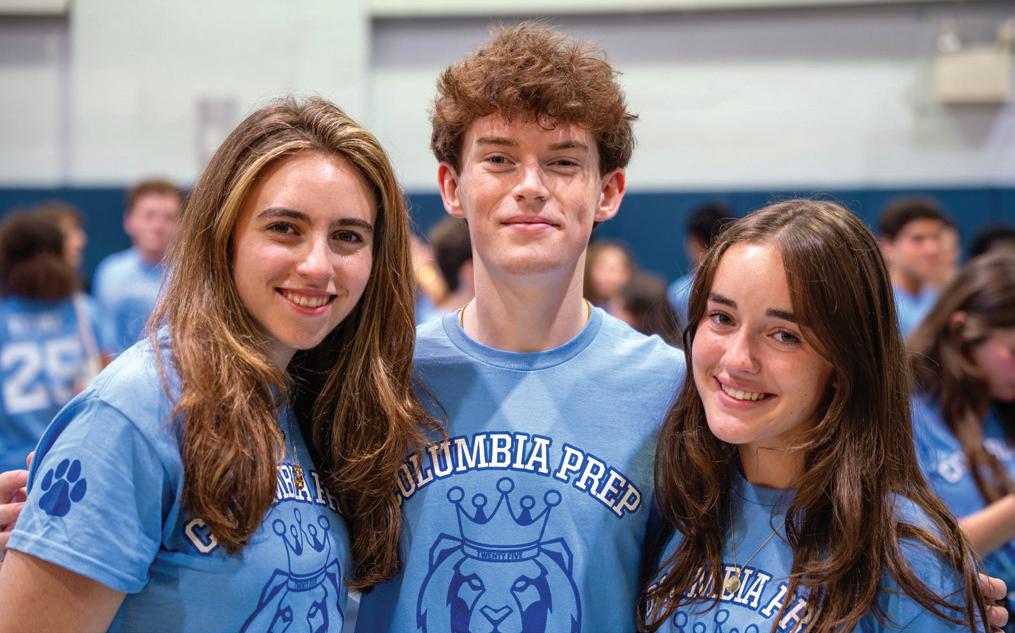
An Extraordinary Journey
Three seniors who have been at CGPS since Pre-K and kindergarten reflect on how their time at the School shaped them into who they are today
By Marquis Austin
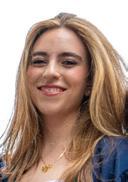
SARA ELBAUM
What salutatorian Sara Elbaum enjoyed most about CGPS, which she began attending in kindergarten, was the opportunity to pursue all of her interests.
“I’ve had the ability to explore so many things from a young age,” she says. A passionate mathematician who took both AP Calculus BC and the Advanced Senior Seminar in Mathematics during senior year, Sara first fell in love with the subject in fourth grade. That year, she had “two amazing math teachers,” both women, and participated in Girls’ Adventures in Math, a team-based competition for elementary and middle school girls. Another influence was
former Middle School math teacher Jessica Merrick, who encouraged Sara to tackle challenging problems with confidence. “Having women as math teachers made me see myself as someone who could do math.”
While at CGPS, Sara also discovered a deep love of literature, sparked by Anna Leader’s ninth grade English class. “She was just amazing to work with,” recalls Sara, who went on to study with Ms. Leader in the Prep School’s Independent Readers Select and Advanced Literary Studies programs. Over six semesters, Sara and Ms. Leader met to discuss titles like Wuthering Heights and A Room of One’s Own. “I got to learn from her one-on-one and really challenge myself.”
Sara is also a dedicated artist, and, like with math, her interest in art began early: “My love for art was very much influenced by my teachers in the Grammar School.” By senior year, she had become a familiar face among the School’s art faculty, having taken classes in photography, film and video, ceramics, painting and drawing. “They’re the kindest people, and I’ve learned so much from them.”
Sara also credits her dean, Vic Puccio, with supporting her growth as an artist, noting that he “encouraged me to follow through with art and not just be a purely academic person.” She adds, “I’ll always be doing art. That’s something I know now because of the teachers I had here.”
Next up for Sara is Columbia University. Although she will miss CGPS—which she considers a second home— she’s excited for what’s ahead and plans to stay open and curious. “CGPS never put me in a box. I got to explore everything,” she says. “I’ll take with me the lesson to never be confined to one thing.”
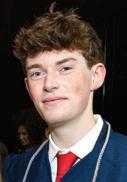
CONNOR BIRTWELL
“I always looked forward to coming back to school. I didn’t like the summer—I preferred CGPS,” says Connor Birtwell, who joined CGPS in kindergarten. His enthusiasm for school each day was fueled in large part by his teachers: “At CGPS, the teachers make the difference. They go the extra mile to make you feel special and included in the community.”
One teacher who left a particularly lasting impression was Andrew Stole. Connor enrolled in his Black & White Photography I course sophomore year and “ended up absolutely loving it.” By senior year, photography played a central role in his daily schedule. During the first semester, he took Black & White Photography II with Mr. Stole, then returned to his classroom for two more courses in the second semester—Advanced Projects: Black & White Photography and Experimental Photography: The Cyanotype Print. “Every day I looked forward to photography. He just makes it so interesting,” he says. “Mr. Stole helped me develop that passion.”
In addition to photography, history became a great love of Connor’s at CGPS. One of his most memorable Grammar School experiences was Settlement Day, a fourth grade event where students reenacted life in a colonial settlement, each taking on a different role in the community. “My love for U.S. history started in the Grammar School, and it is still my favorite thing today.”
A standout class at CGPS ended up being ninth grade U.S. history with Rachel Waltman. “That was one of the first times we had discussions where the teacher stepped back, and it felt more like students really engaging with each other instead of just responding to the teacher,” he recalls. “My love of history was affirmed in her class.”
As Connor heads to Colgate University, he is confident that his time at CGPS has prepared him well for the next chapter. While sitting in on a small, discussion-based class of about 15 during a campus visit, he turned to a fellow accepted student and said, “Oh, this is just like high school.” They looked at him with surprise and explained that their high school classes were massive and their teachers far less engaged. “That’s when I realized my school experience was very focused on preparing me
for college,” Connor says. “I thought, ‘Wow, I really have an advantage here.’”
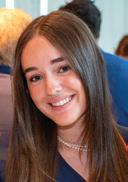
DYLAN FREEDMAN
“I can’t think of a single teacher I’ve had who hasn’t been incredibly supportive and kind,” says Dylan Freedman. “They love what they do, and that love for teaching makes us love learning.” She joined CGPS in Pre-K and remembers “being really excited about coming to school.” From the start, her teachers emphasized active, hands-on learning that kept students engaged and fostered collaboration. “Learning was collaborative—less like, ‘We’re going to learn this now,’ and more like, ‘Let’s do activities and work with each other.’ That kind of environment made me feel engaged and curious,” she says.
This fall, Dylan will attend Cornell University, where she plans to major in biology and pursue the pre-med track. A recent graduate of the Prep School’s Advanced Science Research (ASR) program—“the greatest thing I’ve done at the School”—she spent much of high school researching Alzheimer’s disease. Her project explored “the interaction between two key proteins to see how we might reduce the aggregation of protein tangles, which cause cognitive decline.”
She traces her enthusiasm for science back to sixth and seventh grade with teacher Sara Moldofsky. “I’ve always been interested in science, but my real passion started in her class.” That passion deepened in ninth grade biology with Melinda Bertram. “At that point, I knew I wanted to be a doctor and study science, but it didn’t really become serious until I took biology. Ms. Bertram is the most enthusiastic teacher I’ve ever seen. Her passion rubbed off on us—I just fell in love with it.” That same year, Dylan made the decision to apply to ASR. “Ms. Moldofsky and Ms. Bertram were both incredible science teachers. Having women in those roles made me feel like, ‘I can do this, too.’”
Looking back, Dylan says what shaped her most at CGPS wasn’t just the academics—it was the relationships she formed along the way. “CGPS is really special not only because of the academics, but because of the community. I found so many friends here who I know I’ll stay in touch with for life,” she says. “The balance between academics, social life and extracurriculars made us not only fully formed students but also fully formed people. I would be a completely different person had I not come to CGPS.”

A Chat with Matthew Alander
1764 sits down with new Director of College Counseling Matthew Alander—who joins us from Princeton University, where he served as Director of Admission— to discuss the Prep School’s four-year college roadmap, the annual Junior College Trip and more
1764: Welcome to CGPS! Can you tell us a little bit about your background?
MATTHEW ALANDER: For the past 15 years, I’ve worked in college admissions. I spent 10 years at Tufts University, my alma mater, and then five years as the Director of Admission at Princeton. While there, I managed the dayto-day operations of the Office of Admission, overseeing recruitment, diversity outreach, first-year selection, on-campus programming and the Alumni Schools Committee, which liaises with alumni interviewers.
1764: How does your experience working in undergraduate admissions benefit you in this role?
ALANDER: I gained valuable insight into how selective schools build intentional communities and how students stand out in a highly competitive process. I can share that
insight with CGPS students, helping them craft more compelling applications when applying to colleges.
1764: Can you give a brief overview of what the college process looks like in the Prep School?
ALANDER: We have a robust and comprehensive college process here. We begin with informal college conversations with ninth grade families, where they can ask our staff questions about the college landscape. Then, we host a more formal presentation for tenth grade families to outline what the next couple of years will look like. We formally kick off the process with our Junior College Trip. In the winter of junior year, we provide students and families with an in-depth overview of what the next year and a half will entail. We begin individual meetings in the spring of their junior year and host several events for them. That continues into their senior year, where we help students build their college lists, craft their essays and submit their applications. We guide them every step of the way.
1764: What does the Junior College Trip entail?
ALANDER: We visit three schools—typically Cornell, Colgate and Syracuse—allowing the junior class to bond and experience three very different institutions. We go on campus tours, attend information sessions and learn about each school’s offerings. It serves as an introduction to what they will encounter as they explore various types of schools and the programs they offer.
1764: What are some other events your office hosts?
ALANDER: In the spring of junior year, we invite eight to nine college deans and directors for our College Admissions Workshop, where we hold a case studies program. Students and families hear directly from admissions representatives, review example applications and experience a mock admissions committee to see what happens to an application. The representatives also hold an essay-writing workshop for our students. We also participate in the Independent School College Fair, which hundreds of colleges and universities attend each year, giving CGPS students the chance to hear directly from admissions representatives and learn more about those schools.
1764: The College Office has an essay writing specialist. How do they work with students?
ALANDER: CGPS is fortunate to have several staff members who work directly with our students throughout the
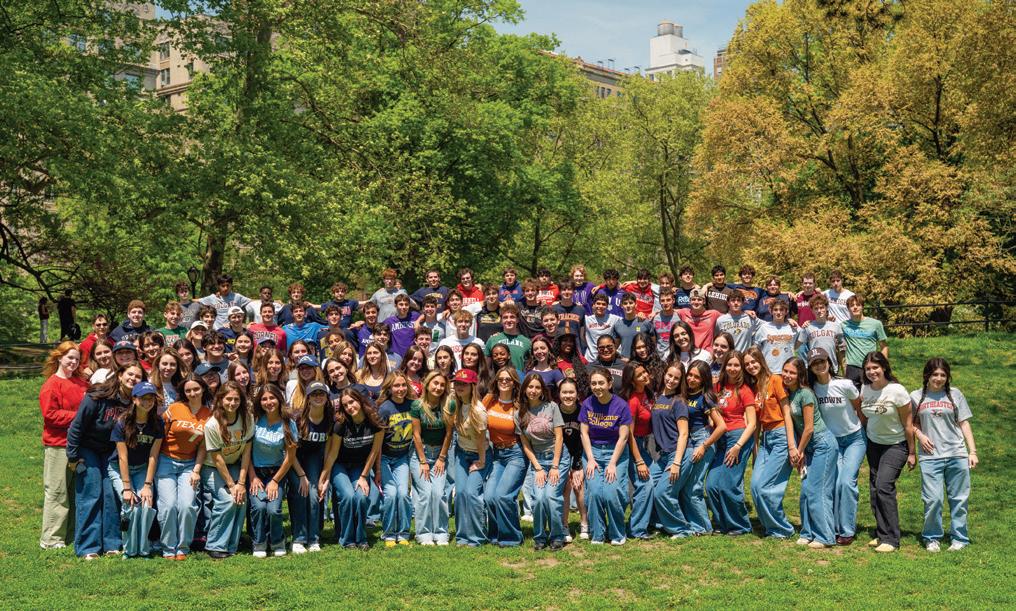
application process, which centers around self-reflection and self-discovery. This is especially true for the essay. Our essay specialist begins working with students in their junior year, helping them brainstorm topics, reflect on their journeys, build outlines and edit drafts. They’re an excellent resource from the very beginning, when students are thinking about a topic, all the way through to submitting their final drafts.
1764: You also welcomed some new faces to the College Office this spring.
ALANDER: We hired Grace Marshall as the Associate Director of College Counseling. She will replace Janet Kraus, who retired after 23 years of successfully serving our students with college placements. Grace comes to us from Tufts University, where she held several senior roles in the Undergraduate Admissions Office over the past 10 years, including Associate Director of Admissions and Director of Constituent Engagement. She has extensive experience in highly selective admissions and will be a fantastic addition to the team. We also hired Cory Pressl as the Associate Director of College Counseling. Cory previously served as Assistant Director of Admissions at Cornell University’s College of Arts and Sciences, a role he held since 2023. He started at CGPS in early May, taking over for Anna Dowling while
she goes on family leave. He will remain a permanent member of the team after Ms. Dowling returns and has already been a great addition. Cory has been working with Anna’s families and meeting with students, and we’re excited to have him on board. Additionally, we promoted Diana Kim to Senior Associate Director. She’ll be working with me on strategic planning for the office and connecting with our college partners.
1764: Now that your first year is coming to a close, how have you enjoyed joining the CGPS community?
ALANDER: I’ve absolutely loved it. It’s been an amazing transition. I’ve really enjoyed getting to know the students and their families and working with them as they figure out where they want to go to school and find a community that’s a strong fit. Helping them navigate such a complex process has been incredibly rewarding. The staff at CGPS have also been so welcoming and warm.
1764: What piece of advice do you have for the Class of 2025 as they get ready to begin college?
ALANDER: Say yes to new experiences. There will be many new classes to try and clubs to join. Be sure to take it all in when you head to the college or university you’ll be joining in the fall.
CONGRATULATIONS TO
THE Class of 2025!
On Thursday, May 29, the Class of 2025 tossed their caps in the air at Alice Tully Hall as they became proud graduates of CGPS! The commencement activities included moving speeches from Head of School Will Moseley, Prep School Director Dr. Scott Wilson, three members of the graduating class and keynote speaker Savannah Guthrie—the award-winning co-anchor of NBC’s Today, NBC News’ chief legal correspondent and a New York Times bestselling author.
Among the student speakers were top-ranking scholar Sophie Eisenberg, as well as Sabina Levkov and Simone McLetchie, who were selected by their peers and teachers to address the Class of 2025. Sophie highlighted how CGPS is a special place where people genuinely want to see each other succeed and urged her fellow seniors to carry forward this spirit of support and collaboration, saying, “Success means more when shared.” Simone invited the class to identify the “small pockets of
kindness” that defined their CGPS experience and to hold onto those moments. Meanwhile, Sabina offered a personal reflection on her journey—from joining the School as a new fifth grader unsure if she would make friends to forging lifelong connections—and encouraged everyone to be themselves, emphasizing that this is the best way to find their community.
Ms. Guthrie echoed these sentiments in her remarks. She advised the Class of 2025 to be authentic and reminded them that “the real you is better than a fake version with a sparkly filter.” As they prepare to embark on the next chapters of their lives, she challenged them to remain curious, follow their instincts and step outside their comfort zones.
With the inspiring words of this year’s speakers fresh in mind, we wish our newest alumni all the best as they begin their post-CGPS journeys.
Congratulations, graduates!
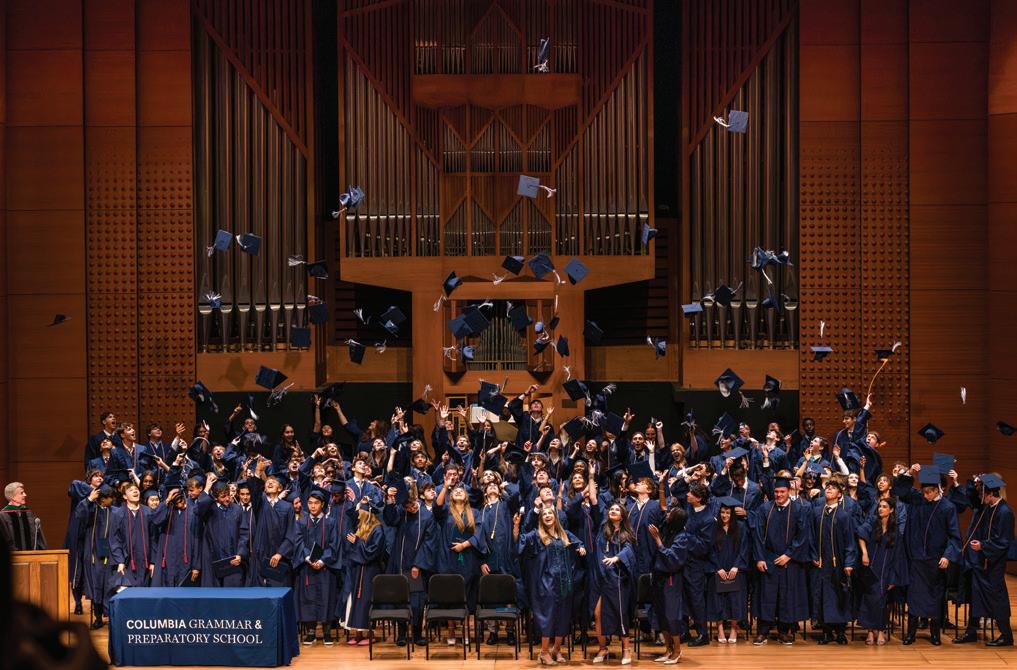
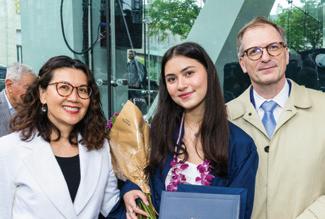



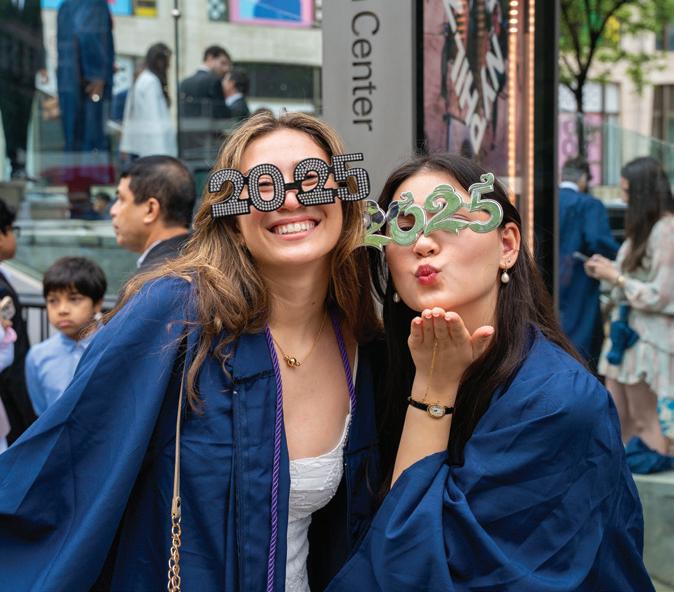
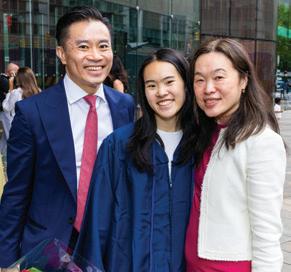
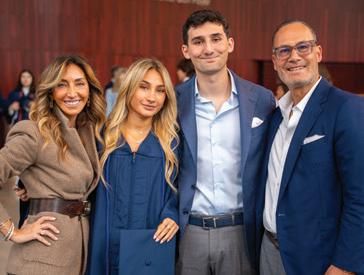

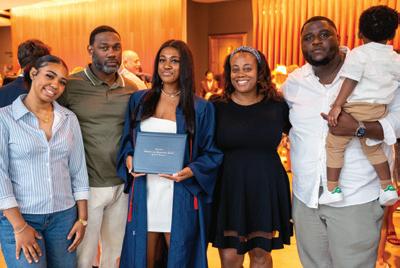
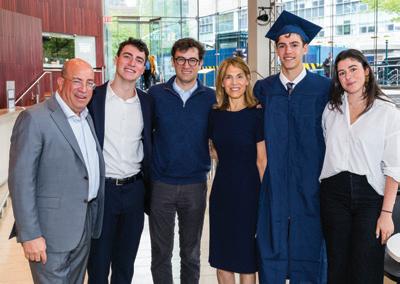

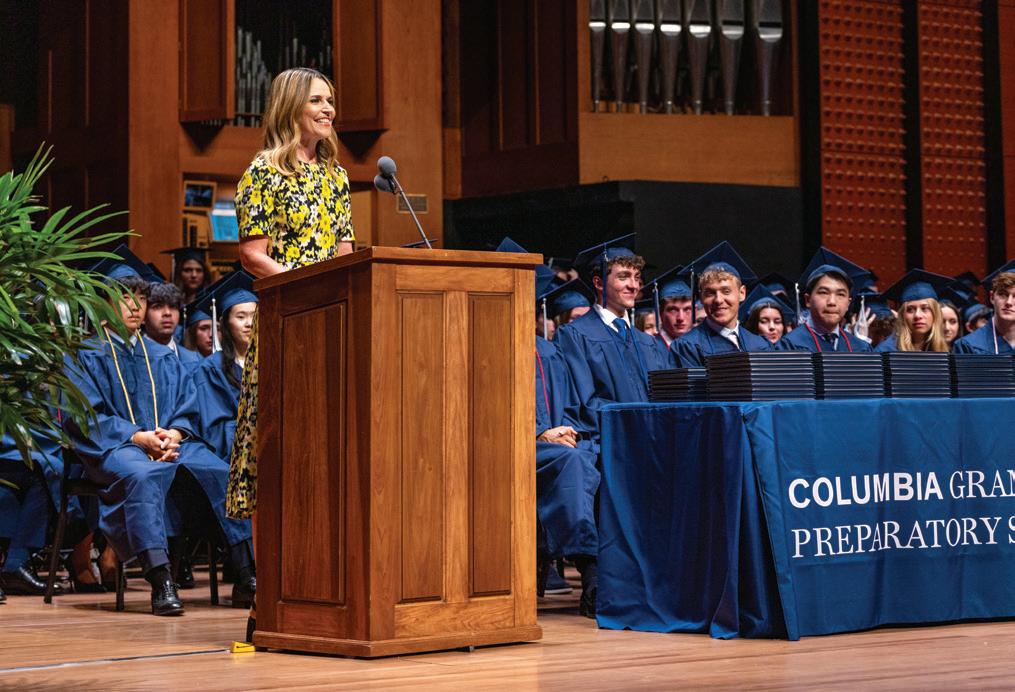
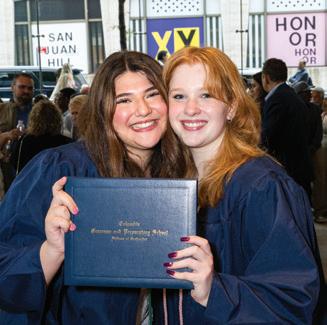
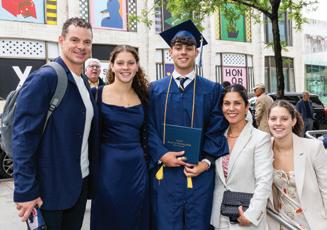

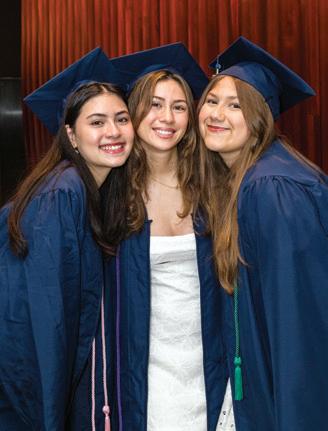
CLASS OF 2025
College Destinations
Amherst College
Bates College
Boston College
Boston University
Brandeis University
Brown University
Colby College
Colgate University
Columbia University/ Tel Aviv University
Cornell University
Duke University
Emory University
Emerson College
George Washington University
Lehigh University
Middlebury College
New York University
Northeastern University
Northwestern University
Oberlin College
Princeton University
Reichman University
Rutgers University
San Diego State University
Skidmore College
Southern Methodist University
Syracuse University
Tufts University
Tulane University
University of Arizona
University of California, Berkeley
University of California, San Diego
University of Chicago
University of Colorado Boulder
University of Miami
University of Michigan
University of Pennsylvania
University of Southern California
University of St Andrews
University of Texas at Austin
University of Virginia
University of Wisconsin
Vanderbilt University
Villanova University
Wake Forest University
Washington University in St. Louis
Wesleyan University
Williams College
Yale University

Alumni News

From Battle of the Bands to Bonnaroo
Marlo Shankweiler ’17, guitarist for the rising band Melt, reflects on their journey from winning a high school “Battle of the Bands” to playing at the famed Bonnaroo Festival this summer
By Ruth Samuelson
Guitarist Marlo Shankweiler ’17 got her first taste of celebrity during her senior spring at CGPS. Marlo and a few fellow Prep School seniors—Nicholas Sare and Jack Florio—and other friends were in a band called Melt. After winning a “Battle of the Bands” competition, the group netted $500 and used their earnings to record a song, “Sour Candy,” a wistful, jazzy bop about missing someone.
They filmed the session and posted the video on YouTube. In the following days, Marlo remembers the video “sweeping the whole school.” Everywhere she went, people were playing it on their phones. Soon, it racked up views on YouTube (eight years later, there are nearly 600,000). On Reddit, strangers compared Melt’s sound to Maroon 5 and “a Gavin DeGraw + John Legend sound.” It all went down in the waning days of high school, as Marlo and her bandmates prepared to scatter to other colleges and gap year experiences. “There wasn’t any sort of emphasis on ‘How are we going to stay together?’” she says.
It would probably be unimaginable to that pack of seniors what has happened since. Cut to 2025, and the band—though with some lineup changes—is still together. They’ve toured the country several times, released an album and, this summer, they’ll play Bonnaroo, the famed festival in Tennessee that welcomed 70,000 people last year. Later in the summer, they’ll open for the Grammy-nominated band My Morning Jacket at some of the biggest venues of their career. Suffice it to say: “None of us thought we’d be pursuing it to the extent that we are now,” says Marlo.
For Marlo, playing music has always centered around the guitar. She began taking lessons in second grade, arrived at CGPS in fourth grade and, by high school, got to feed her passion each day through classes and, most indelibly, by gaining access to Prep School music teacher Joseph Carbone’s “unreal collection of guitars.” She loved hanging out in his office and plucking those guitars off the wall. “He had original
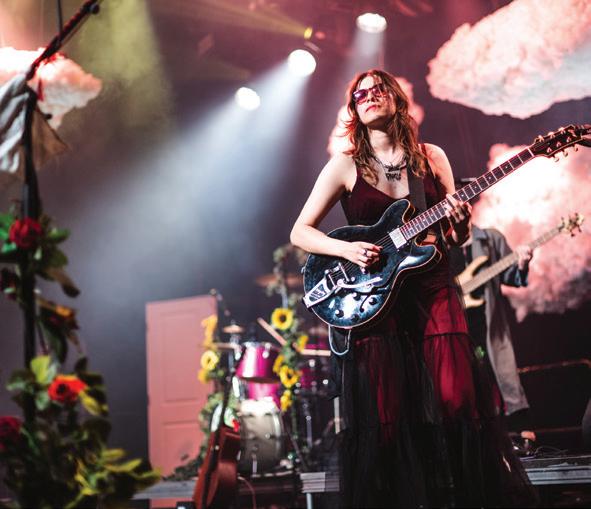
D’Angelico guitars,” she remembers. “And these are priceless, handmade jazz guitars that were in the Metropolitan Museum of Art for their guitar exhibit.”
At CGPS, Marlo packed her day with music classes: “The music program in our high school is phenomenal,” she says. “I took every elective: Jazz Theory, Jazz Improv, Jazz Band, Guitar Club—I was in all of that.” High school also taught her practical life skills—multitasking and maintaining a strong work ethic—that are immensely relevant for touring musicians today. “High school was the busiest I’ve ever been,” she says. “I had no free periods. I was in AP classes and also doing music.” Today, Marlo is involved in myriad management tasks for the band, from purchasing insurance and managing travel logistics and merch orders to writing e-newsletters for the band’s fans and much more.
After graduating, Marlo attended the University of Southern California, where she was a music industry major. But after her first year, she decided to move back to New York City and transfer to NYU. Unexpectedly, the band had picked up steam and was playing gigs, and she wanted to be a part of it.
During those college years, Marlo and the band performed regularly across the Northeast, even though they were living hundreds of miles apart. It turned out their disparate campuses had a silver lining—it widened their fanbase. When a friend or band member
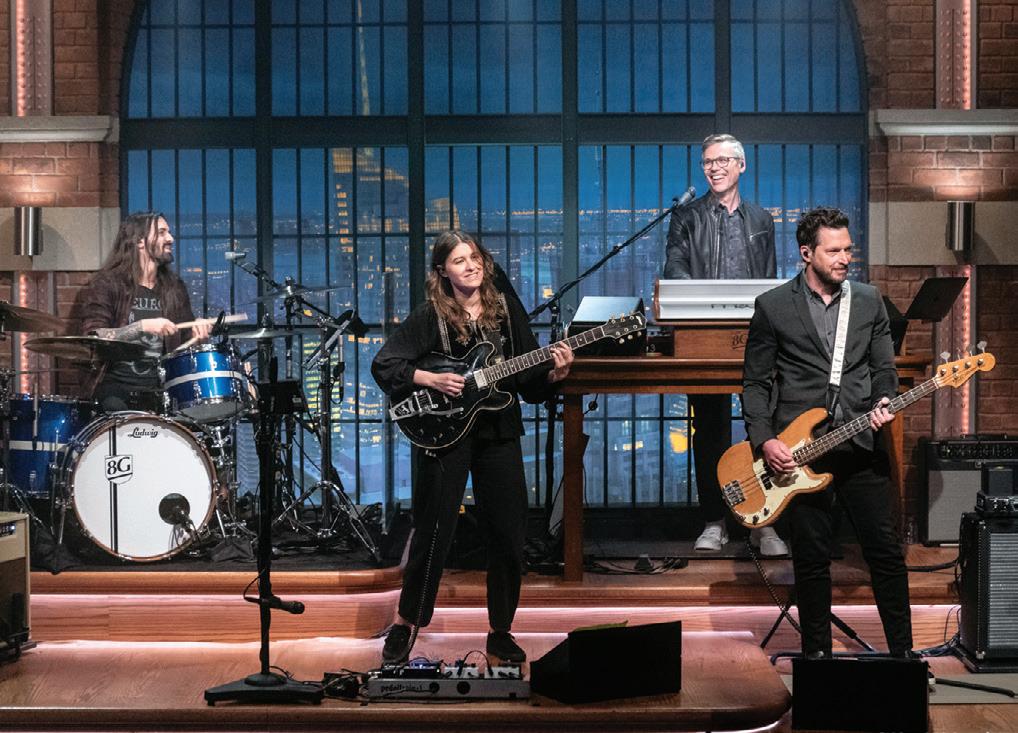
“The music program in our high school is phenomenal. I took every elective: Jazz Theory, Jazz Improv, Jazz Band, Guitar Club—I was in all of that.”
MARLO SHANKWEILER ’17, MELT GUITARIST
organized a show near their college, their local connections packed the venues. At a particularly memorable concert at Middlebury College, Melt had “the time of our lives,” playing to hundreds of kids “in the sweatiest room” with fogged windows. Though they didn’t know it then, that show would be their last before the Covid shutdown.
During spring 2020, the entire band was living in New York City for the first time since high school. They met regularly for two-week periods (after testing and quarantining) to write and record music. In 2021, they put out their first EP (extended play) called West Side Highway with six new songs. Once the world began reopening, Melt, now signed to the United Talent Agency, hit the road again. By then, Marlo had already graduated. Improbably, their casual high school band was still going, and they began working on their first full-length album.
Producing that album—If There’s a Heaven—was a defining moment for the band, allowing them to create an entire sonic, aesthetic vision for the first time. “We always joke that it took us seven years to record a record in seven days,” Marlo says.
Today, in the music industry, most groups record digitally, often capturing pieces of the music separately and then mixing them later.
Melt chose a different path. “We all recorded in the same room, using no headphones—so what that means is no sounds are isolated. Our emphasis was being together and capturing the spirit of the band,” Marlo explains. The album, released in 2024, was produced in the Catskills, and the visuals match, evoking lazy summer days, with the group posing in lakes and fields dotted with wildflowers.
With a full album, they’ve been able to expand their reach, completing a 50-show headlining tour, meaning that even in smaller markets—places like Columbus and Boise—they’re building a fanbase. It’s fun, but it’s also “such a grind,” says Marlo. “When we’re in the van, we’re going to bed at 2 a.m. and hitting the road at 8 a.m. Then, it’s a five-hour drive most days.”
But it feels like that work has paid off. When they open for My Morning Jacket starting in August, they will play in beloved venues like the Hollywood Palladium (capacity: 4,000), Berkeley’s The Greek Theatre (5,900) and, most thrillingly, two nights at Colorado’s Red Rocks Amphitheatre (9,525). “Ever since we started the band, our collective dream was to play Red Rocks.” Over the 11-show tour, Melt will perform for thousands of potential new fans, increasing their exposure.
Marlo and her bandmates are already planning their next album, influenced by touring. Their shows are “energetic and loud,” and they’re aiming for a “heavier pop rock” sound—the kind of songs that sound incredible blasting through arena speakers.
Rapid Fire with Marlo Shankweiler
Favorite performance so far in your career?
One weekend away from college, we played at The Sinclair in Cambridge, Massachusetts, which was our first time playing to 500 people. It was completely exhilarating.
What is your favorite song on your album?
Definitely “Plant the Garden.” It’s such a hippie jam. It’s a song that is very characteristic of something only our band could create.
What is your favorite memory with your band on the road?
In October, our van broke down and got stuck at a gas station for 12 hours. It was the dustiest place and felt so disgusting, but it was such an amazing bonding experience. These hard moments bring us closer—even though we were hungry and stranded in the middle of nowhere. We had to call our opening act, who picked us up and drove us to a rental place to get three rental cars. We loaded our gear into the cars and drove through the night.
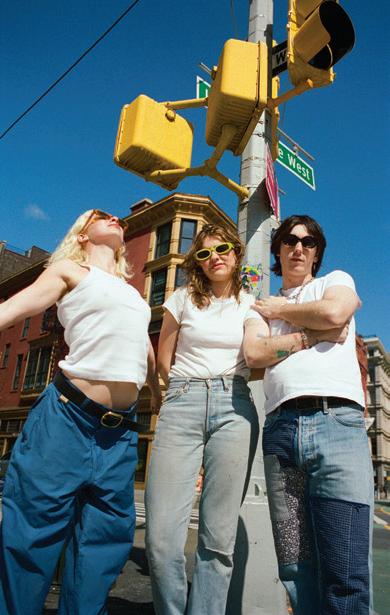
What musician are you dying to see perform that you’ve never seen before?
Oh gosh, I go to 100 concerts a year. I’ve seen almost everyone I’d want to see. I’d love to see Radiohead again.
Which musician has inspired you the most?
Trey Anastasio of Phish. His live guitar work is incredible. He is so in touch with the audience, and the audience is so in touch with him. He’s a big influence for me.


Cracking the Code
Dr. Eric Pierce ’77, a renowned clinician-scientist, pioneers groundbreaking gene therapies for inherited retinal diseases
STORY BY RUTH SAMUELSON ILLUSTRATION BY CHRIS GASH
In 2010, Dr. Eric Pierce ’77 sat down for a dinner that would change the course of medical history. At the time, Dr. Pierce was developing gene therapies to treat inherited eye conditions. That night, at an event held by the Foundation Fighting Blindness, he met Jeannette Hogan. Her five-year-old son Jack had been diagnosed with a progressive genetic disorder that was slowly destroying his vision due to mutations in a gene called RPE65. As a baby, Jack spent hours staring at the lights in his nursery and sometimes walked into walls or fell down the stairs. As he grew, his condition worsened, straining his eyesight, especially at night.
During the dinner, Dr. Pierce discussed his work on a therapy in clinical trials that could potentially treat Jack’s condition. At the time, “gene therapy was a new thing” and considered risky, Dr. Pierce reflects. Highly publicized setbacks had rocked the field. In 1999, a teenager, Jesse Gelsinger, died during a clinical trial to treat his liver condition. Other trial participants developed cancer. (To be clear, Dr. Pierce was not involved in these trials.) The FDA had yet to approve a single treatment.
Despite the challenges, a team at the University of Pennsylvania, led by Drs. Jean Bennett and Albert Maguire and including Dr. Pierce, foresaw incredible breakthroughs in gene therapies and pressed forward with caution. Soon after the dinner, Jack had his first consultation with Dr. Pierce. His family did not want him involved in a trial, but they stayed in touch.

Years passed, and Dr. Pierce moved his research to Mass Eye and Ear and Harvard Medical School. The Hogan family, who lived in New Jersey, traveled annually to see him, eager for updates on the treatment. Then, in 2017, the FDA finally signed off on the therapy, called Luxturna. It was the first fully sanctioned gene therapy for an inherited disease. By then, Dr. Pierce had known the Hogans for eight years. The following spring, Jack became the first patient to receive the FDA-approved treatment, which delivered a healthy synthetic copy of the RPE65 gene to his eyes.
The procedure was a success—life-changing for Jack and a watershed moment for genetic medicine. The Penn team’s research will go down in history as “a turning point when it comes to this novel form of therapy,” said then FDA Commissioner Scott Gottlieb during the announcement of Luxturna’s approval. “I believe gene therapy will become a mainstay in treating, and maybe curing, many of our most devastating and intractable illnesses.”
Even as an ambitious young researcher, Dr. Pierce never had a master plan for his career. He just doggedly pursued the science that excited him. One of his earliest lessons occurred at CGPS. Although he graduated nearly 50 years ago, he easily remembers studying genetics using fruit flies during his junior year: “We learned how to view fruit fly salivary gland chromosomes, which was a pretty delicate dissection technique and very cool microscopy.” That was teacher Jules Alexander’s biology class. “Taking
biology with him sealed the deal that I was going to do biology, in some shape or form, long-term.”
That trajectory led him to pursue a bachelor’s degree in biochemistry from Dartmouth College, then a PhD in biochemistry from the University of Wisconsin and finally a medical degree from Harvard Medical School. With each program, he relished circulating through different labs and, later, medical practices—learning hands-on. He did his PhD studying how vitamin D works.
“Vitamin D is important for lots of human biology, and it’s therefore associated with lots of human disease,” he says, citing bone health as one critical example. Vitamin D helps people absorb calcium, which keeps bones strong. For his dissertation, Dr. Pierce identified and characterized the receptor—the protein inside intestinal cells—that binds the vitamin D hormone and enables it to stimulate cells to absorb calcium.
His research unearthed key insights for reducing or preventing osteoporosis. “If you have too much bone breakdown and not enough bone rebuilding, you lose bone density and you’re at risk for fractures. This process of how vitamin D works is intimately involved in that.”
By then, he planned to attend medical school. It was the obvious next step: All his role models—the most awe-inspiring researchers producing profound medical breakthroughs—were MDs or MD-PhDs. “I think of science as putting your small brick in a big wall, trying to build something you understand,” he says. And given that
research is so time-consuming, painstaking and rife with failure, “I wanted to do science that—if we made that effort and discovered something—could have an impact on human health.”
Dr. Pierce still hadn’t encountered ophthalmology—but that was finally coming. After finishing his coursework at Harvard Medical School, he was thrilled to explore “wonderful hands-on experiences” in different clinical rotations. Corneal specialist Anne Bajart hooked him on ophthalmology. “She was excited about the work and engaging. We had a lot of opportunities to see surgeries and participate in patient care and clinics. The microsurgery—with the science that was evolving at that time—just was the right fit.”
Following medical school, he completed a residency at Harvard, spending time at Mass Eye and Ear and several other teaching hospitals. In 1996, he completed a fellowship in pediatric ophthalmology. His life’s work had come into focus: “I knew my goal was to be an academic ophthalmologist: to find a medical school and center, become a faculty member and practice ophthalmology while conducting research on eye diseases.”
That goal is now Dr. Pierce’s everyday reality. He leads the Ocular Genomics Institute at Mass Eye and Ear and Harvard Medical School, where he teaches fellows, guides investigators, oversees research, supports the academic promotion process and more. As a leading gene therapy researcher, he contributes to the scientific community through conferences, meetings and publications. He also continues to see patients—most from New England, though some travel from across the U.S. and occasionally from abroad.
This unique blend of research and clinical work is essential for advancing innovation. Building strong relationships with patients—gaining their trust—is crucial for identifying trial participants. “It takes time for patients to understand the potential benefits and risks,” Dr. Pierce says. He always tells his fellows, “I know this sounds boring—it’s not surgical—but the time we spend counseling patients is just as important.”
Thanks to Luxturna—Jack Hogan’s transformative treatment—Dr. Pierce and his team now have the wind in their sails. Luxturna’s approval was “paradigm changing,” he says. Genetic researchers can point to it as they seek funding and collaborate with biotech and pharmaceutical companies. The science also has broader implications for medicine. “A natural connection is: What other neurodegenerative diseases might be treatable? A great example is spinal muscular atrophy. There are now two FDAapproved genetic therapies. That connection, I don’t think that happened independently,” says Dr. Pierce.
Indeed, the FDA is now regularly sanctioning new cellular and gene therapies. As of May, there were 45 approved products, treating an array of diseases, including lymphoma, leukemia and sickle cell disease. This spring,
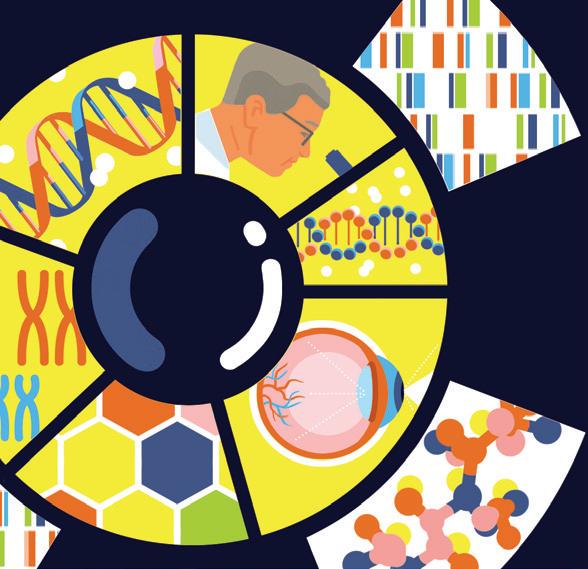
there was another milestone in the field: A baby, KJ Muldoon, became the first patient to receive a custom gene-editing treatment, according to his doctors. Born with a potentially deadly genetic disorder, he was given an infusion designed to fix his precise mutation—a feat that required immense collaboration between doctors, researchers and medical technology companies.
In 2023, Dr. Pierce won the prestigious Proctor Medal, the oldest award for scientific excellence in the field of vision research. He has built the apparatus—the reputation, the team of researchers, the pipeline of future researchers and the clinic—to produce trailblazing medical breakthroughs. Now, he’s looking to the future. “I’m at a stage in my career where I have one more phase to go,” he says. For the past five years, he has been “succession planning.”
Colleagues are taking over his clinical practice, allowing him to gradually wind down his patient care.
Dr. Pierce is eager to harness the latest advancements in genetic research and refocus on lab work. Luxturna deploys a technology—gene augmentation therapy—that researchers believe could treat many other eye conditions. With the addition of CRISPR-Cas9 gene editing (whose chief developers won the Nobel Prize for Chemistry in 2020), “there’s the potential to treat any genetic form of inherited retinal disease.” In the past few years, Dr. Pierce’s Ocular Genomics Institute has led 17 new clinical trials for inherited retinal disorders. He believes there will be additional FDA-approved gene therapies for inherited eye diseases “relatively soon,” and he can’t wait to dig in. “My real love is the lab work,” he says.
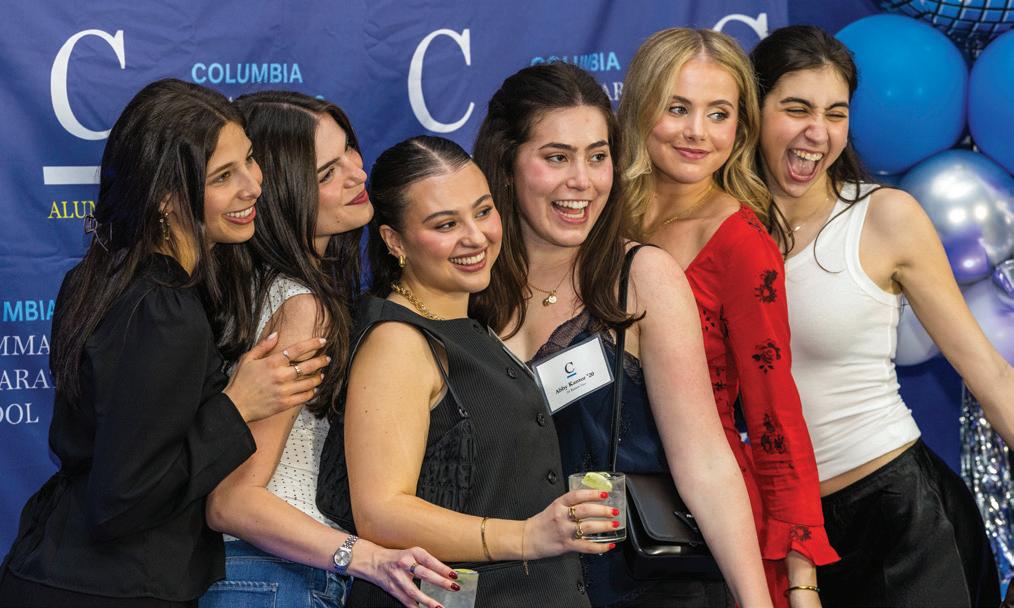
A Year of Alumni Connection
By Gretchen Phelps-Nelson, Associate Director of Alumni Relations & Events
It’s been another fantastic year connecting with CGPS alumni! We expanded our traditional events and introduced new ways to bring our community together.
A highlight of the year was our annual Junior College Trip, held from September 12 to 13. I had the pleasure of joining the Class of 2026 on a tour of Colgate, Syracuse and Cornell, where alumni at each stop shared their insights on college life. Later in the month, CGPS was buzzing with school spirit as we celebrated Homecoming Week. Alumni gathered at Randall’s Island to cheer on our varsity soccer teams, and we hosted our first-ever fall
cocktail
party on the Middle School roof.
In October, alumni participated in the School’s 40th annual Reservoir Run. The following month, current and former parents prepared care packages for the Class of 2024, sending them a bit of love as they powered through their first semesters of college. Just before the holiday break, we hosted our Alumni Winter Warmer at Iris, bringing together graduates from the Classes of 1969 to 2023 for a festive evening.
After the new year, CGPS alumni returned to action at our Alumni Basketball Tournament. Hosted by Coach Ryan Pettit and the Boys Varsity Basketball team, this highly anticipated event saw alumni return to their old stomping grounds to compete and root for CGPS as they triumphed over Trevor Day.
The year culminated in our Alumni Reunion Weekend in May, with celebrations for classes ending in 0 and 5. The weekend kicked off with an art department meetup on Friday afternoon in the Prep School library, followed by drinks and
conversation at The Wolfe. Saturday began with the Golden Lions Pride Brunch at Arte Cafe, honoring alumni celebrating 50+ years. Later, alumni and their families enjoyed the sunshine in Central Park at our first Family Picnic. In the evening, the North Gym was transformed with blue and white to welcome alumni for dinner and dancing. The Class of 2005, celebrating their 20th anniversary, had the largest turnout.
We wrapped up the year with our Alumni Induction Ceremony on Tuesday, May 27. It was an honor to hear from guest speaker Perry Skolnick ’14, who welcomed the Class of 2025 into our alumni family.
Looking ahead, details about alumni news and events for the 2025–2026 school year will be shared in the upcoming quarterly newsletters. For now, please mark your calendars for these exciting events:
• Homecoming Week: Jan. 6–10
• Alumni Basketball Game: Jan. 10
• Reunion Weekend: May 1–2
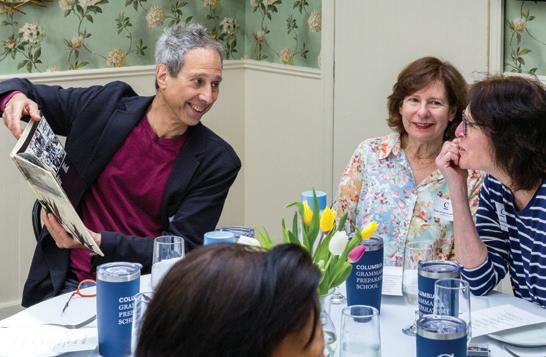

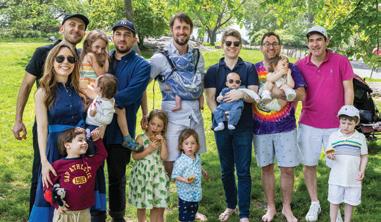

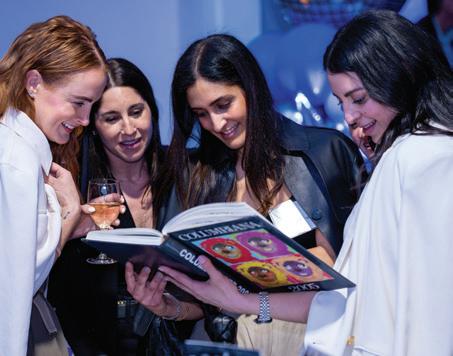
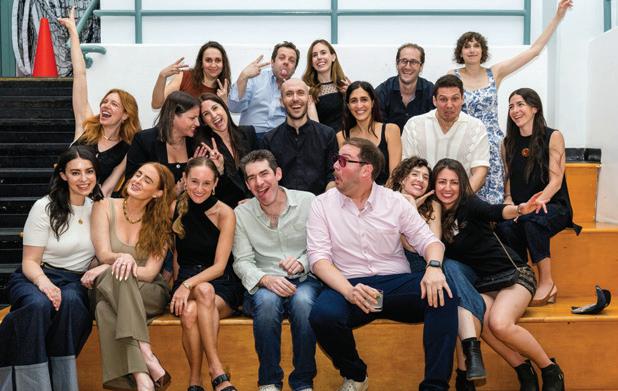

Class Notes
1963
After 31 years in veterinary practice and 10 years of teaching, Marc Kantrowitz now lives in upstate New York (Delaware County, about 40 miles northwest of Woodstock). He would enjoy reconnecting with any classmates who find themselves in the area. Boz, their alert yellow Lab, serves as the family’s watchdog.
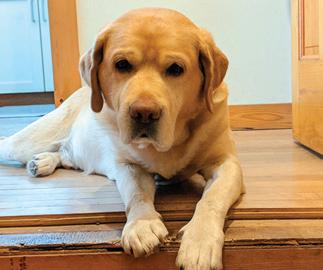
1964
After spending the past 24 years splitting their time between Scottsdale, Arizona, and Aspen, Colorado, Richard Felder and his wife Debbie have sold their home in Arizona and moved to Palo Alto, California. They are already enjoying the temperate climate, cultural offerings and access to Stanford Medical. The number one reason for the move, however, was to be closer to their son, daughter-in-law and two grandchildren in San Mateo— just 20 minutes away. Richard and Debbie still plan to spend June through September at their home in Aspen. He would be happy to hear from classmates.
After stints as a gallery director and event venue manager, Barbara Rich has been working in senior home care for the past eight years.
1965
Although only six were able to attend, Robert Gelman enjoyed seeing his classmates from the Class of 1965 during Reunion Weekend. He wished more could have joined and is sorry some of the Manhattanites couldn’t make it. Robert hopes more will come out for their 65th reunion in 2030.
In September, Mack Books will publish a book of photographs by Stephen Shore taken from 1960 to 1965—mostly while he was a student at CGPS—titled Stephen Shore: Early Work
Michael Winter enjoyed a recent rendezvous with Washington, D.C., graduates, whom he describes as “very impressive and accomplished folks!” After a career with the RTC, FDIC and HUD, Michael is now retired and spends his time singing, drumming, acting, dancing and hiking in the Shenandoah Mountains. He wouldn’t want it any other way and sends his best to all.

1969
Sheila Roher recently returned to New York City after nine years away
and is grateful to be back. She is currently working on several writing projects, including a play and an essay on astrological history, and is planning to adopt a dog. Sheila remains thankful for the excellent education she received and is focused on using her time meaningfully during this period of extraordinary change.
1970
Although he left CGPS after sixth grade, Franklin Lowe still feels connected to his old classmates. A recent Zoom reunion gave him the chance to reconnect with Rickey Rose, with whom he had lunch last year while in Denver. Franklin is still a practicing urologist and is currently at Montefiore Medical Center in the Bronx.
1973
Jessica Hentoff lives in St. Louis with her 34-year-old parrot Teko and 6-year-old dog Maple, and continues to serve as the Artistic and Executive Director of Circus Harmony, the social circus school she founded. You can learn more about Circus Harmony on their website. If you’re in St. Louis, Jessica invites you to see a show or take a class with them at the City Museum. This summer, she’ll be taking a small troupe of young aerialists to Stuttgart,
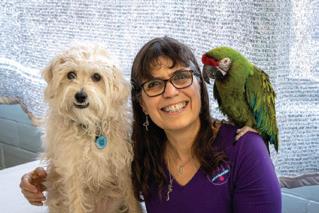
Germany, to tour and collaborate with a circus school there. With federal funding in jeopardy, Jessica is always seeking new ways to support her mission of helping children defy gravity and other limitations.
1974
Deborah Mallow is sending positive energy to all! Still living in Manhattan, she works as a success and mindset coach and is the creator of The Daily Decisions—self-improvement essentials designed to reinforce positive habits. Deborah recently released her debut personal growth book, 6 Steps to Fewer Days That Suck. She looks forward to connecting with the CGPS community.

1973
June has been a momentous month for Joshua Abrams. He is wrapping up 20 years as the founder and Head of School of Meridian Academy, a progressive, interdisciplinary, project-based, economically accessible independent secondary school in Boston. He is not retiring but “rewiring” and looks forward to focusing on mentoring mathematics teachers, writing curricular materials and advising schools, including one


launching in Vancouver, CA. Even more exciting—and perfectly timed— he is thrilled to announce the birth of his first grandchild, Ellis Haber McNeill, on June 8. Joshua and his wife Emily are planning to visit Ellis in New Paltz as often as possible.
Lydia Mann is loving life as a Cape Cod washashore after being sure she’d never leave New York City. Now in her 64th year (and 55th with type 1 diabetes), she starts each morning happily with walks on the beach or nearby trails. Traveling with her longterm boyfriend, Leslie Kaminoff, to teach workshops on individualized, breath-centered yoga and anatomy has started picking up again post-pandemic. They travel only to places they want to visit and work with people they enjoy spending time with. Lydia writes, “Life now seems relatively short, so it is worth living richly and with full intention each day.”
Leslie Shampaine is excited to share that she received a Fulbright Scholar Artist Grant for 2024, which took her to India to research arts
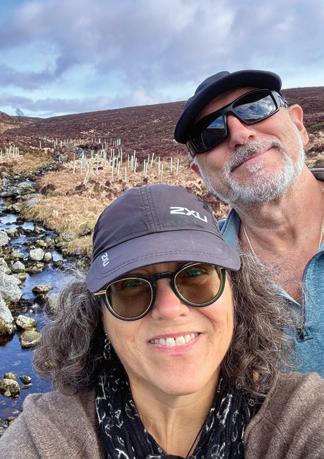
programs for underserved youth. She also taught media and screened her film Call Me Dancer at U.S. embassies, universities and schools in both India and Nepal. The film premiered on PBS’s Doc World on June 29 and is available to stream on the PBS Passport app.
1982
Joshua Mondschein was recently featured in New York Magazine’s “Look Book” with Burberry on trench coats. He writes, “Interestingly, the CEO of Burberry Americas is also a CGPS alum from 1982—Laura Dubin-Wander. She and I connected after she saw me in the final photo selection for the layout and reached out after 42 years. Say hi to Mr. Terban for me.”
1984
Mandy Keifetz teaches writing, interviewing and AI literacy in the Media Studies Department at

Queens College, CUNY, and is otherwise engaged in fighting the power. A new edition of her second novel, Flea Circus: A Brief Bestiary of Grief, was published this year by Unnamed Press.
Lisa Rappaport recently wrote a book published by Hachette called Parenting Dyslexia: A Comprehensive Guide to Helping Kids Develop Confidence, Combat Shame, and Achieve Their Full Potential
1986
Ethan Herschenfeld writes, “I hope everyone is well, even though, objectively, the world is a disaster. For a distraction, please look for me in some upcoming movies, shows and series, including Black Rabbit (Netflix), The Savant (Apple TV), The Only Living Pickpocket in New York (on the big screen) and M.I.A (Peacock).”
1987
2025 marks 25 years since Nicholas Kaufmann became a published author. To celebrate the occasion, he
has a new collection coming out in late summer titled Monuments in Darkness, which features 11 stories from the latter half of his career, including two originals written exclusively for the collection. His novel 100 Fathoms Below, co-written with Steven L. Kent, has been optioned for film and will hopefully hit screens soon. Nicholas still lives in Brooklyn with his wife, Alexa Antopol—the CIO of Fisher Dachs Associates, an architectural consulting firm specializing in performing arts spaces—as well as their two “deranged” cats. He can’t believe he’s 56, especially because in his mind, the rest of his class is still 17.
1988
Last fall and winter, Diane Bromberg relaunched her seasonal business, Future Gift, which had been on hold while she and her husband raised her two children and she worked as a business manager. With their children now grown (20 and 23), she is excited to resume creating her seasonal products. In spring and summer, Diane designs custom reusable bags made from discarded single-use plastic bags— the one pictured is mostly made from New York Times delivery bags—helping reduce landfill and waterway waste. In fall and winter, she bakes edible geodesic domes.
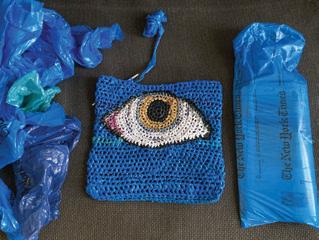
Made of gingerbread and inspired by Buckminster Fuller’s engineering principles, the hollow domes distribute weight evenly across cookie triangles, making them strong enough to ship nationwide. To learn more, or to purchase your own DIY kit, visit the Future Gift website.
Eric Schnall’s debut novel, I Make Envy on Your Disco, won the Barbara DiBernard Prize in Fiction and was published by Zero Street/UNP in May 2024. He is also a theatrical producer who won the Tony Award for the Broadway revival of Hedwig and the Angry Inch and the Lucille Lortel Award for Fleabag
1993
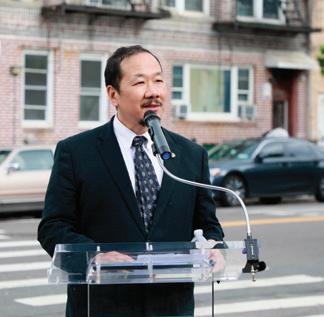
Dr. Keith Tsz-Kit Chan is an associate professor and Social Welfare Policy Chair at the Silberman School of Social Work at Hunter College and currently serves as a Congressional Fellow to the U.S. House Ways and Means Committee, Democrats. He continues to practice and teach martial arts and recently served as master of ceremony for the street naming of Don B. Lee Way at 70th Street and 15th Avenue in Brooklyn, in honor of his mentor. His recently published book, Addressing Anti-Asian Racism
with Social Work Advocacy and Action, is available through Oxford University Press.
1998
Michael Tacorian and his wife welcomed their first child, a baby boy, in November 2024, which has been their greatest adventure yet. His company, BlackPearl Capital, a real estate investment firm focused on hotels, continues to grow steadily. Michael is grateful for all that CGPS gave him and is excited to stay connected as an alum—and hopefully a future CGPS parent!
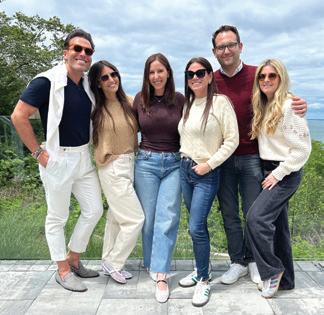
2003
A few CGPS Lions from the Class of 2003 got together to celebrate summer! Pictured from left to right are Matthew Melinger, Lara Gillman, Samantha Landman, Ali Smolens, Josh Shapiro and Jessica Coren.
2005
Daniel Tam-Claiborne’s debut novel, Transplants, came out on May 13, 2025, with Simon & Schuster/ Regalo Press. The novel is a
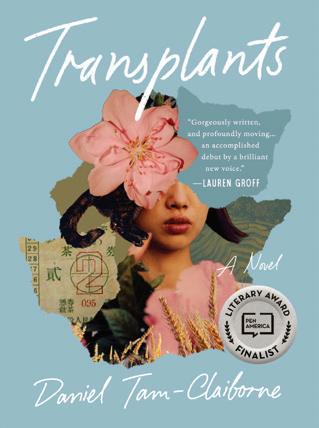
coming-of-age story following two young women—one Chinese and one Chinese American—as they learn what it means to be their truest selves in a world that doesn’t know where either of them belongs. Hailed by Lauren Groff as “gorgeously written and profoundly moving,” Transplants is an exploration of race, love, power and freedom that reveals how—in spite of our divided times— even our fiercest differences may bring us closer than we can imagine.
2014
Sofie Rimler currently resides in Los Angeles and recently produced the Jewish comedy short film Cut Off, which won the Audience Award for Short Film at the 2025 Miami Jewish Film Festival.
Perry Skolnick writes, “The last year and change has been a blur. I had a stroke in early January 2024 and was in a coma for five weeks to kick things off. I know—you’re so young! I am. But the stroke came anyway. I am lucky and thankful to be alive. I’ve thought about CGPS a lot since I graduated, and even more since my
stroke. Last year was also my 10-year reunion—which was great. Anyway, I want to thank all the teachers and staff that CGPS has brought into my life. It’s not every day you come across a 29-year-old with so many great friends at their old school. Special shout-out to Ms. Schackman, Ms. Kraus, Margarita and many more. This school will be with me forever. With lots of love, Perry Skolnick, Class of 2014.”
2023
Benjamin Kassan, a University of Pennsylvania student studying economics and statistics, is working on an AI education startup—GradeWiz— backed by Y Combinator. He also conducts research with Penn’s Graduate School of Education on how AI can support teachers and enhance student learning. Benjamin observes that AI is rapidly changing how students learn, study and demonstrate mastery. “What worked for previous generations will no longer be enough. Over the next one to three years, AI will transform everything from classroom instruction to test-taking, tutoring and the very definition of ‘understanding,’” he writes. He emphasizes that the most valuable skills going forward will be critical thinking, adaptability and the ability to collaborate with intelligent systems. Benjamin encourages CGPS students to embrace curiosity and maintain a hunger for learning, noting, “The future of education won’t be about who gets the right answer first—it will be about who can use AI tools to think deeper, build smarter and reach novel insights that no system can generate alone.”
1764 Looks Back
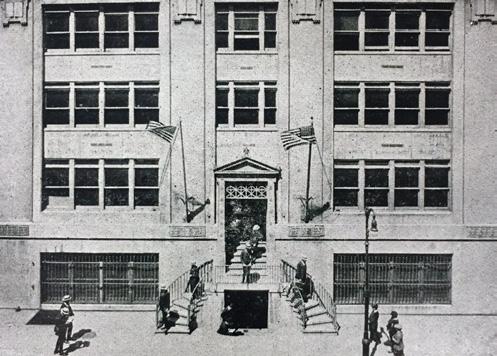
261 Years of Growth and Expansion
By Marvin Terban
When King’s College (later Columbia College) founded us as their grammar school in 1764, they had no room for it in their building in lower Manhattan, so they rented space for the first seven students in the back room of an upholstery shop on Little Queen Street. That small space might have totaled 150 square feet. Today, our School occupies over 225,000 square feet in thirteen buildings on three streets. The story of our growth over the past 261 years is one of necessity, grit, survival and upward movement.
By the early 1770s, the college had relocated us to a room on the ground floor of its large building. When the president of Yale visited in 1784, he noted in his diary that forty boys were occupying one classroom. The college gave us more room when it rented space for us for two years—1828 and 1829—in the New York Institution just north of City Hall. The New-York Historical Society, the New York Society Library and the American Academy of Fine Arts were our neighbors in that building, so we were in some pretty impressive company. Those were also the years that Herman Melville was a fifth and sixth grade student of ours.
So many New York families were sending their sons to our School that in 1830 Columbia College built us a building of our own on Murray Street, just behind the college. As the city expanded northward in the 1800s, we moved uptown with it. We occupied rental space on Fourth Avenue (now Madison) and 23rd Street. By mid-century, Columbia College took over a large building recently vacated by the New York Institute for the Deaf at 50th and Madison. We occupied the second floor.
In 1864, when we separated from the college, we kept renting space in midtown Manhattan until, by the end of the nineteenth century, we were comfortably ensconced in a handsome stone building at 34–36 E. 51st Street. We should have bought that building. An impressive glass skyscraper occupies that location today.
By the early twentieth century, we had tired of renting rooms, so we made the leap to the burgeoning Upper West Side and built ourselves a fine school building at 5 W. 93rd Street. In 1936, a teacher at the School took over four brownstones on W. 94th Street and founded the Leonard School for Girls. When Miss Leonard married the headmaster of Columbia Grammar School in 1966, the two schools merged, and the brownstones became the lower school. Today, those four brownstones have grown to nine.
As our enrollment grew over the next two decades, the need for more space became obvious and essential. We built the Prep School building at 4 W. 93rd Street in 1984 and another Prep School building at 36 W. 93rd Street in 1997. In 2001, we constructed another new school building at 3 W. 92nd Street. In 2015, we added three floors to the 36 W. 93rd building for the new Middle School. The New York Times once called us “the school that ate up the Upper West Side.”
Three years ago, we started an ambitious renovation project, which has resulted in a state-of-the-art cafeteria (one of six at our School) in the 36 W. 93rd Street building. At 4 W. 93rd Street, we completely refurbished the entrance lobby and student lounge, created a large Tech Hub for robotics, reimagined our Prep School library as a spacious media/research center and fashioned a row of soundproof music classrooms and recording studios. More renovations are planned for the future.
From humble beginnings, we have grown into one of the largest independent schools in the city in terms of space and facilities. While many other prominent New York independent schools have closed their doors over the last century, CGPS continues to expand and flourish.
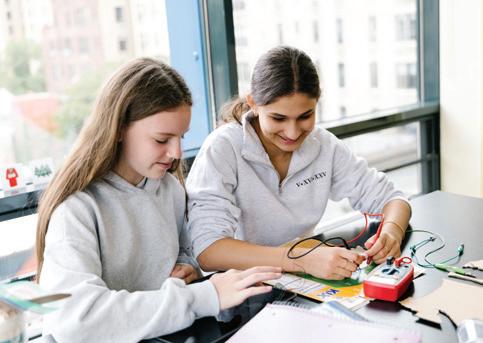
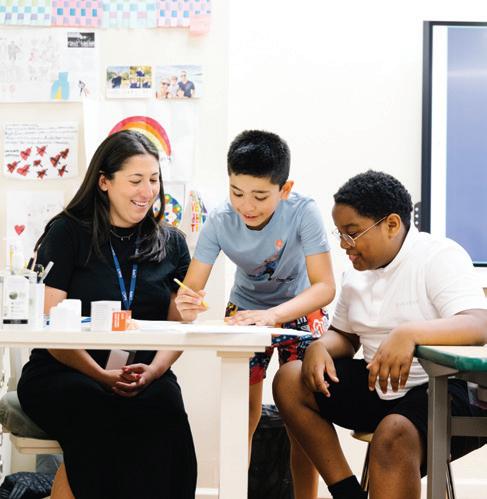
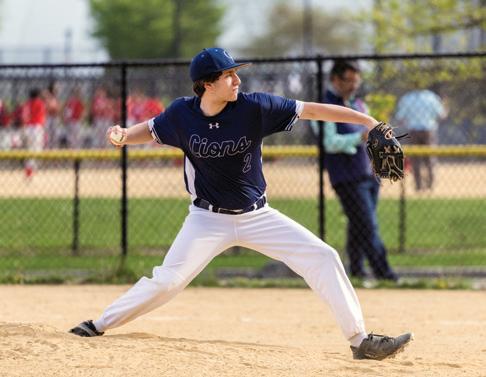
Every child’s extraordinary CGPS journey begins with you.
From their first steps in our Grammar School to receiving their diplomas at Alice Tully Hall, students at CGPS shine brightly as they realize their full potential. Each day, our dedicated faculty and staff nurture a balanced educational experience tailored to the unique needs of every child, ensuring they develop a passion for learning, along with a deep sense of purpose, joy and self-satisfaction.
Donations to the Columbia Grammar & Preparatory Fund play a crucial role in shaping each student’s path to success. Your support creates a cohesive educational experience that inspires students to take innovative risks and equips our classrooms with cutting-edge technology that sparks students’ curiosity. The CGPFund also provides our teachers with robust professional development to help them meet each child’s unique needs, enriches our athletics and art programs, and much more.
To donate, visit www.cgps.org/giving/give or email the Office of Institutional Advancement at giving@cgps.org.
